

 Marshall Murdock
Marshall Murdock
History has taught us that all nations need a vision, otherwise “people will perish”. Without a long-term plan, without a vision, people are doomed to wonder aimlessly.
Examples of visionary realities: the first railway built in Canada was in 1836. On August 3, 1871, the first of the numbered treaties with local First Nations was signed in Lower Ft. Garry in Manitoba. In 1931 the Port of Churchill was built primarily for domestic services but ended up becoming an international service provider to world markets. The seven Treaty One First Nations envisioned the establishment of the largest urban Reserve in Canada at the former Kapyong Barracks, now called Naawi-Oodena. Under their leadership, this became a reality in 2021. This landmark project is not
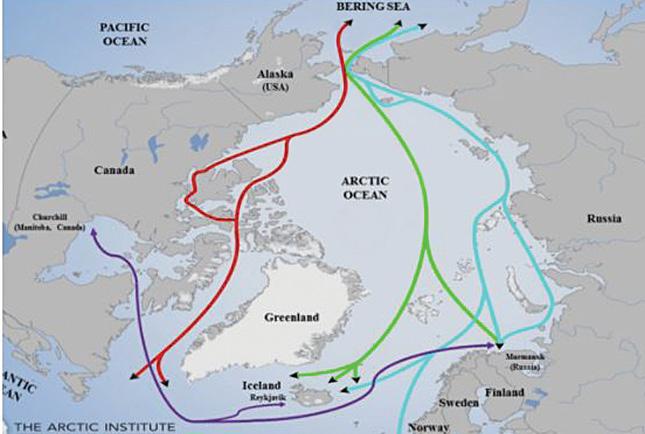
only for the Treaty One Nations, but also for Manitoba and Canada, including for other generations to come. This is vision.
NeeStaNan is a vision for Manitoba, Canada, and the interna-
tional communities worldwide. NeeStaNan means “All of Us”. The NeeStaNan Corridor Group under the leadership of former chiefs, executives from oil and gas, university
‘NeeStaNan’ u
400 years of history with Europeans
A trip back to where it all began near the Nelson and Hayes rivers
The mouth of the Nelson and Hayes Rivers is where the original trade between first nations and European explorers began in this part of the continent.
People have lost or never knew the rich history of First Nations and European contact reaching back to 1611, when Henry Hudson sailed into the Bay over 400 years ago. A year later, Sir Thomas Button sailed in and named the Nelson River, and over the next 60 years, a variety of visitors sailed in and out. In 1668, Médard Chouart des

NeeStaNan: A road to the world
A boon to Churchill and the Arctic Gateway line, a game changer for the Prairies and all of Canada

One way though the Bay?
As the planet warms and the Northwest Passage once more becomes a realizable dream, the world is looking at the Arctic as the next major shipping lane for many reasons, most importantly because of shorter shipping times.
Sadly, they are ignoring Hudson Bay and instead are considering Halifax as Canada’s most northern viable port, which makes no sense.
People have been trained to think there is only one port on Hudson Bay and that is Churchill, and they have written Churchill off as two small, too shallow, and inaccessible for most of the year.
But Churchill is not the only option, either from the world shipping perspective or from that of exporters in Canada. Indeed, when the idea of a working port and a railroad to get




lifestyles55.net FAST DENTURES 204-947-1807
13 ‘NeeStaNan’ u 12 ‘400 Years of history’ u 15
is all about
The
NeeStaNa N : all of Us Manitoba’s Gateway to the world Map of the mouths of the Nelson, Hayes and Fourteen Rivers. This is a recreation of the original 1912 map by the Champlain Society in 1931. SUITES AVAILABLE NOW The Heart of Independent Living 204.788.8020 | misericordiaterrace.ca
solution – a shorter and
NeeStaNan
vision!
Port of Churchill, with grain elevators, dominates the harbour and the economy of Churchill.
The NeeStaNan
quicker route.



2 lifestyles55.net June 2024 BUY SOONER, WIN MORE WITH EARLY PRIZE DEADLINES! SCAN TO ORDER 2 for $20 5 for $40 15 for $60 40 for $80 1 for $100 2 for $175 4 for $300 8 for $500 2 for $20 10 for $40 30 for $60 60 for $80 Sara Orlesky & Joe Aiello Tri-Hospital Dream Lottery Spokespeople WIN 1 OF 6 GRAND PRIZE CHOICES BUY TODAY 204-254-9131 | 1-844-654-4677 trihospitaldream.com 50/50 PLUS® tickets and EXTRA CASH PLUS™ tickets can only be ordered with your 2024 Tri-Hospital Dream Lottery main tickets on the same transaction. Must be 18+ to play. In the event of an advertising discrepancy, the official 2024 Tri-Hospital Dream Lottery Rules and Regulations will apply without exception. License Numbers: LGCA 1517-RF-43630, LGCA 1517-RF-43631, LGCA 1517-RF-43633 TICKETS MAKE THE MOST OF YOUR RETIREMENT LET’S WIN TOGETHER CAN GROW UP TO $3 MILLION Winner takes half! 120 WINNERS $148,000 in Prizes! IN-PERSON SALES ONLY AVAILABLE AT: ST. VITAL CENTRE WINNIPEG & SELKIRK FOOD STORES AND MAIN ST. PHARMACY 2024 DREAM LOTTERY OAK BLUFF | HIGHLAND POINTE | PRAIRIE POINTE | WEST ST. PAUL | WEST KELOWNA, BC OR CHOOSE $1,250,000 CASH WIN YOUR DREAM HOME! THOUSANDS OF PRIZES TO WIN WORTH MILLIONS

Follow us online at: lifestyles55.net
Facebook: Lifestyles55
PUBLISHER
Pegasus Publications Inc.
EDITOR
Dorothy Dobbie dorothy@pegasuspublications.net
ART DIRECTOR
Karl Thomsen karl@pegasuspublications.net
GENERAL MANAGER
Shauna Dobbie shauna@pegasuspublications.net
CONTRIBUTORS
Lori Blande, Gary Brown, Janet Curie, Wally Daudrich, Romel Dhalla, Dorothy Dobbie, Shauna Dobbie, John Einarson, Kelvin Goertzen, Stefano Grande, Tom Hyde, Jim Ingebrigtsen, Ian Leatt, Robyn Lore, Myron Love, Fred Morris, Marshall Murdoch, Doyle Piwniuk, Seneka Samarasinghe, Trudy Schroeder, Johanna Trimble, Wayne Weedon, Katie Yablecki.
Canadian Publications mail product Sales agreement #40027604
PRINT ADVERTISING
Gord Gage • 204-940-2701 gord.gage@pegasuspublications.net
DIGITAL ADVERTISING
Caroline Fu • 204-940-2704 caroline@pegasuspublications.net
SUBSCRIPTIONS
If you would like to receive Lifestyles 55, we offer both monthly newspaper and online formats. To place your order, call 204-9402700. Subscriptions are $48.00 per year, plus tax. American Express, MasterCard, Visa and cheque accepted. To view a back issue online visit lifestyles55.net
Published monthly by: Pegasus Publications Inc. PO Box 47040, RPO Marion Winnipeg, MB R2H 3G9 204-940-2700 whatsupwinnipeg.ca
DISTRIBUTION
Available at more that 20 rural towns and cities as well as more than 100 locations in Winnipeg. If you would like bulk copies of this publication, contact Gord Gage at (204) 9402701 or gord.gage@pegasuspublications.net. Also available digitally at whatsupwinnpeg/ lifestyles and on Facebook: Lifestyles55
EDITORIAL SUBMISSIONS
Call Dorothy Dobbie at (204) 940-2716 or email dorothy@pegasuspublications.net for more information and guidelines.
Any opinions expressed in columns by our contributors are their own opinions entirely and are not necessarily shared by Pegasus Publications Inc. All information presented by the contributors is the responsibility of the writers.
Lifestyles 55 is published monthly. Reproduction in part or in whole is prohibited without seeking permission in writing from the publisher.
Copyright Pegasus Publications Inc.
Never pass laws you can’t enforce or that are designed to punish to deter behavior
A version of the article was published in Lifestyles about a decade ago. It still applies with the few updates I have added.
One error that governments make over and over again is passing laws that they can’t enforce with any success. This would include everything from prostitution to banning drugs, including marijuana, to abortion, all things a certain percentage of people will do and can do without detection, but which are part of human desires and do not exploit or harm others outside the perpetrators themselves.
We have tried banning alcohol, to no effect. Animals, even certain insects, get “high” deliberately for some atavistic reason. Why would people be different? Yet billions were spent, people incarcerated, and lives ruined over the need by an element of the population to impose their will and idea of morality on others.
The same is true of the other “sins” listed above.
tion whether spending money on law enforcement for things that cannot be stopped or even for things upon which there is no consensus is the wise course of action. Would we not be better served through education and support for changing selfharming behaviour?
Governments should never pass laws that don’t address real issues or are based on false information or faulty logic.
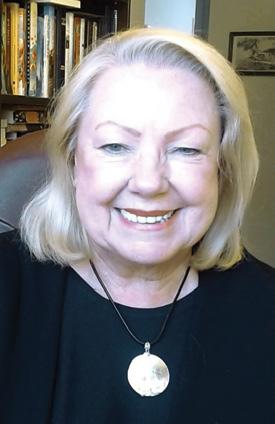
Apart from morality, the other motivator is money. Governments like to pass laws that extort “fines” for certain behaviour. I remember as a six-year-old in Toronto and being told to run inside, turn off the radio and hide it in the dresser drawer. Why? Because my mother and some ladies were gossiping in the garden and word came down the street that the radio license inspector was on his way. They all ran home to shut off their radios, too. He got no license money that day. They eventually abandoned the “law”.
Governments should also never pass laws that are meant to punish as a way of deterring behaviour. Punishment doesn’t work; in the case of punitive fines, it can do great harm to those least able to pay; in the case of jail terms, it simply exposes the perpetrator to new opportunities to live on the fringes of societal norms.
Today, governments are assessing extortionate fines and punitive penalties on people for having the minutest bit of alcohol in their blood when they are in control – or were recently in control – of a car. Yet the statistics do not bear out the claim that .08 has any impact on the number of traffic deaths being experienced. The MADD people have, however, convinced lawmakers that this is justified.
The silliest of all is the carbon tax which is supposed to “punish” your pocketbook with an escalating tax to deter gas guzzling behaviour with one hand – I think they forgot about home heating – and with the other hand reward you for . . .? Well, we haven’t figured that one out.
This law is based on a double whammy: money and morality. You are very bad if you don’t want to save the planet (even though with 1.6% of world wide emissions, our tax is hardly doing that) and we’ll pinch your pocket book to make sure you comply – except, we will give it all back . . .Huh?
All this is not to say that we can’t form consensus about what is good and desirable social behaviour, but we should ques-

There are many examples of these: the law against using email addresses without explicit permission was one such. It was justified as a means of cutting down SPAM. Big spammers simply moved their accounts offshore, so that didn’t work at all, but small business and nonprofits were put to tremendous expense and trouble to avoid breaking the law. Privacy laws are another. The only privacy being protected is that of government agencies and corporations and meanwhile you can’t access information about your own telephone bill because it is in your husband’s name. Nor can you access information to help your 19-year-old child with mental or drug issues, because he or she is now an “adult” and their privacy is protected under the law.
A few years ago, the federal fisheries department passed regulations banning boats from coming within 100 metres of beluga whales. If you’ve ever been to Churchill during whale birthing season you would know how ridiculous that is. The belugas are curious creatures; they approach the boats, the kayaks, even brave, wet-suited swimmers.
There are many such laws on the books that should never have been passed because they were based on false premises or were subverted by regulations that twisted the intent of the original bills into something entirely different.
Recently, the federal government tried to come up with laws to ban “fake” news! So far, they have been unsuccessful because the concept is completely ludicrous. Success would have serious implications for the future of free speech. How could intelligent people who believe in democracy even contemplate such a thing? It has never been possible to stop people from presenting their version of the truth. Just because you see things differently doesn’t make the other guy wrong. Just ask any investigator about eye-witness accounts. And when it comes to issues, that credibility gap between observers widens considerably. Government sanctioning is anti-constitutional, anti-democratic and simply anti-common sense!
Not only that, but the whole thing is totally unworkable. You simply will not be able to shut down chatter on any of the social media channels, not to mention publishers and broadcasters of the old-fashioned kind.
Passing unworkable and punitive laws simply begs for civil disobedience. There are always those who can only be pushed or herded so far. They, like the truckers who descended on Ottawa, will eventually refuse to obey and, in my humble opinion, that is a good thing for democracy!




June 2024 lifestyles55.net 3
ISSUES IN THE NEWS
Dorothy Dobbie
Celebrate the garden all year long with Canada’s Local Gardener magazine by subscribing today! Check us out at localgardener.net
Parliament versus the Supreme Court
A court is restricted to the interpretation of codified language. Canadian courts are not authorized to interpret the will of the people, which right is abrogated to the representatives that citizens elect and who can be removed every five years if the people choose.
The recent use of the Notwithstanding clause by various provinces has prompted much discussion over its legality and appropriateness. In many ways this exemplifies the debate over the balance of power between legislators and the courts.
When the 1982 constitution was negotiated, repatriating Canada’s constitution from Britain and codifying an amended Charter of Rights that had been introduced by a previous Diefenbaker Government as the Bill of Rights, there were very deep concerns among some of the provinces that they were signing away their sovereignty.
In Canada, the delicate tension between provincial and federal jurisdictions has been a key component of our confederation from the beginning. Getting that balance right is what made it possible for French and English Canada to join hands and form a new nation. Understandably, Quebec felt compelled to guard its provincial sovereignty, as well as its civil code of law and its language as inalienable from who they are as people. But other provinces felt just as concerned about an overreaching federal government intruding on their jurisdiction for “people” and local affairs and more importantly, imposing programs on them that interfered with their priorities and budgets.
to allow only French on commercial signage.
Since that time, Quebec again, and Saskatchewan, the Yukon, Alberta and Ontario have used the clause. What has this to do with the supremacy of Parliament over the decision of the Courts? It is fundamental to our parliamentary democracy. This clause basically says that notwithstanding our commitment to certain “rights” and freedoms in Canada, the will of the people, through its elected body, may override these “rights” (essentially privileges) under circumstances that may arise. It understands that a court is not authorized to make judgement calls but is restricted to the interpretation of codified language.

In many ways this highlights a fundamental difference between the English and French psyche. England and English-speaking Canada are ruled by common law where precedence preserves the original intent of the legislation and helps guide decisions, while the French psyche demands a written set of rules that are meant to be immutable.
Supreme Court is doing its job
The Supreme Court is one more thing in the line of defense against possible government corruption or overreach. It defends the values in our Constitution, and its power to overturn laws made by Parliament is an essential part of our system of checks and balances that underpins our democratic governance. It is a necessary safeguard that protects our rights and freedoms.
When Parliament enacts laws, it is the Court’s duty to ensure that these laws do not infringe upon the Charter. By striking down legislation that violates constitutional principles, the Supreme Court acts as a shield, defending the rights of individuals against potential overreach by the people who want to get re-elected. What is right is not always what is popular.
Some of cases that have come under scrutiny in the current century include: 1. 2004, same-sex marriage: The Supreme Court of Canada provided an advisory opinion (at the request of the government) on the constitutionality of same-sex marriage. Critics argued that the Court was effectively making policy decisions that should have been left to Parliament. The ruling paved the way for the legalization of same-sex marriage, which some felt was a legislative rather than a judicial decision.
2. 2015, physician-assisted death: The Supreme Court overturned its own previous decision and struck down the prohibition on physician-assisted dying. While many praised the decision for recognizing the rights of individuals, others felt the Court had overstepped by making a significant and complex social policy decision, a role typically reserved for Parliament. However, if Parliament had made laws consistent with the Charter, the case would not have made it to the Supreme Court.
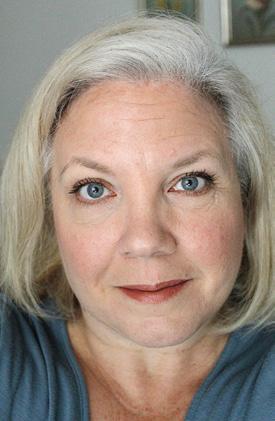
Under the British North America Act (as our original constitution was known) Parliament was supreme without reference to the Court whose sole responsibility over how the country was governed was to adjudicate jurisdictional disputes between the provinces and the federal government or to rule over criminal law appeals. The introduction of the new Charter of Rights and Freedoms to the Constitution and with it the Notwithstanding clause changed that.
Provinces that could formerly exercise lawmaking decisions within their jurisdictions were now forced to refer to the Charter. The Notwithstanding Clause gave them the opportunity to resist, for fiveyear periods, provisions under Sections 2 and 7 through 15. These clauses deal with fundamental freedoms, legal rights and equality rights — but the clause cannot be used to override democratic rights.
The first challenge came from Quebec, immediately upon the adoption of the Charter in 1982 when the province invoked the clause in an omnibus bill to cover all its legislation. That act of defiance expired in 1987 and was not renewed. However, in 1988, Quebec again invoked the Notwithstanding clause to override a Supreme Court of Canada ruling that struck down a Quebec decision
FEDERAL
• Public Debt and Property
• Regulation of Trade/Commerce
• Unemployment insurance (negotiated from provinces)
• Direct/Indirect Taxation
• Postal Service
• Census/Statistics
• Defence
• Navigation/Shipping

Not everyone sees the role of the courts in such clearly defined terms. They would argue that the Court’s job is to interpret the rules (laws) and that “no one is above the law”. This overlooks two facts: 1. legislators created the rules and can change them, and 2. language is inexact and fluid – what is understood now is not necessarily what was intended by the framers of the law being examined. Reference to precedence is critical to keep the intent alive.
Justices are also human, and their interpretation of the law can be influenced by inherent biases. At certain times, Courts can also be dominated by political appointment (a case in point is the American debate about abortion and the issue of Roe Vs Wade which is said to have been influenced by political appointees to the court).
Finally, all of this must be viewed with an understanding of the role of the provinces in a confederal state. All communities are shaped by their environment. Canada is a vast country with many physical differences and very diverse communities governed by history, sources of immigration, indigenous populations, the time of entry into Confederation, and so on. So, while the media often complains that there should be “equality” between the provinces, this is said without reference to the facts and without understanding jurisdictional differences.
The notwithstanding clause is a healthy escape valve guaranteeing the paramountcy of Parliament and therefore of you, the people.
• Quarantine (added 2005)
• Sea Coast and Inland Fisheries
• Ferries (interprovincial/ international)
• Currency/Coinage
The Court is beholden not to the government, not to a vote by citizens, but only to the education, experience and intense consideration and debate of nine individuals who are well versed in the law. The justices of the Supreme Court are among the most knowledgeable and experienced legal minds in the country. Their decisions are based on thorough legal reasoning and a deep understanding of constitutional principles. This expertise ensures that the laws are interpreted and applied in ways that are both legally sound and equitable.
Justices serve an average of 16 years. That is longer than most Prime Ministers, who serve (as Prime Minister) for about 7 years on average. (The number actually ranges from 68 days to over 21 years.)
That means that the Supreme Court is continually renewed at a very slow rate, which is good. No single Prime Minister has a hand in the appointment of every Justice, nor of a majority of Justices, at any time. The wheels of democracy must turn slowly.
But what about overreach? What about when the Court goes beyond these ideals I’m talking about and starts to, effectively, make laws?
While the Supreme Court of Canada’s primary role is to interpret the Constitution and ensure laws comply with it, the consequences of its rulings can extend beyond simple interpretation. By striking down laws, setting new legal standards, and influencing policy, the Court can shape the legal and legislative landscape in ways that resemble lawmaking. This dynamic is intrinsic to the power of judicial review and the Court’s responsibility to uphold constitutional principles, even if it sometimes blurs the lines between judicial interpretation and legislative action.
Federal Provincial jurisdictions
• Indians/Indian reserves
• Citizenship
• Marriage/Divorce (shared with provinces)
• Banking /Incorporation of Banks/ Paper Money
• Weights and Measures
• Bankruptcy
• Patents and Copyrights
• Criminal law, including Criminal Procedure and Penitentiaries
• Works connecting provinces; beyond boundaries of one province; within a province but to the advantage of Canada/or more
3. 2010, Omar Khadr: In this case, the Court ruled that the Canadian government had violated Omar Khadr’s rights under the Charter of Rights and Freedoms by being complicit in his detention and treatment at Guantanamo Bay. The decision required the government to take action to rectify these violations. Critics argued that the Court was overstepping by directing foreign policy and national security decisions, which are generally within the purview of the executive branch.
4. 2013, legality of prostitution: The Court struck down laws related to prostitution, including those prohibiting brothels, living on the avails of prostitution, and communicating in public for the purpose of prostitution. The ruling was perceived by some as judicial activism, as it effectively created a regulatory vacuum and forced Parliament to create new legislation.
In the last three of these cases, the Court’s decisions were based on its constitutional mandate to interpret and enforce the Canadian Charter of Rights and Freedoms. When it finds that a law violates constitutional rights, it has the authority to strike it down. This judicial review process is a fundamental aspect of the Court’s function in a constitutional democracy, ensuring that individual rights are protected against potential overreach by the legislative and executive branches.
While the consequences of these rulings may influence public policy and legislative action, they remain within the Court’s purview as guardians of the Constitution.
You may not like that the decisions of the Court were within their purview, and you may disagree with the conclusions of the Court. But to accuse the Supreme Court of overreach? That’s just sour grapes.
than one province (Interprovincial roads, Interprovincial waterways)
PROVINCIAL
• Direct Taxation within Province
• Management/Sale of Public Lands belonging to Province
• Hospitals
• Municipalities
• Formalization of Marriage
• Property and Civil Rights
• Administration of Civil/Criminal Justice
• Prisons for laws under provincial jurisdiction
• Education
• Incorporation of Companies
• Natural Resources
• Matters of a merely local or private nature
4 lifestyles55.net June 2024
Dorothy Dobbie Shauna Dobbie
Dobbie vs Dobbie
Steinbach celebrates 150th birthday
This year marks the 150th birthday for Steinbach, Manitoba’s third largest city. And while there are some special events planned, the modest celebration is perhaps in keeping with the history and personality of the community.
The original 18 families that settled in Steinbach in 1874, fled Russia. These Mennonite families, known as the Kleine Gemeinde (small church) Mennonites, tried to build a replica of the village that they had fled. Canada not only offered them land to settle, but they were promised the religious freedom they so deeply cherished.
tem, but in long narrow strips of land perpendicular to and on either side of the creek so that each could have access to a source of water.
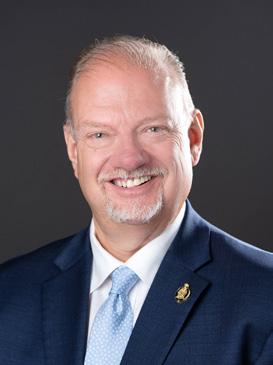
Those early settlers set the foundation for what would become one of Manitoba’s fastest growing communities in recent years. Yet, if they were able to see Steinbach today, on the surface they would recognize almost nothing of what the city of 20,000 people has become. But if they looked a little deeper, they would see that the community they started maintains many of the values present in the original settlers.
For one, Steinbach remains a community that values giving. Even as the city has changed demographically, annually it competes as one of the most generous communities in Canada for charitable giving. While much of this is rooted in commitment to faith, it is also a reflection of gratitude and the belief that if you have plenty, it should be shared with those who may have less.
For the early settlers of Steinbach, survival was dependent on this philosophy of sharing and helping neighbours. That is even reflected in the early design of the community where settlers divided their land not in the traditional grid sys-
Steinbach continues, 150 years after its settlement, to value hard work and industry. While the first families to the community faced the daunting task of building homes and farms while combatting Manitoba winters, they quickly also developed commercial enterprises. Within a couple of generations, the beginnings of foundational companies emerged. What today are known as Loewen Windows, Penner International trucking, Barkman Concrete and the Steinbach Credit Union, trace their roots back to the early days of Steinbach. This entrepreneurial spirit is still well rooted within the community.
Perhaps most notably, the City of Steinbach continues to welcome people from around the world. Just as the original 18 families came in search of a better life, families from around the world continue to come to Steinbach seeking the same for themselves and their children.
As a lifelong resident of Steinbach, I have seen this change and the positive impact it has had. When I was a young person, if I wanted to see the world, I had to board a plane and travel. Today, the world has come to Steinbach and for young people like my son, it has had an incredibly positive impact as he benefits from learning from friends who have a different life experience than his own.
Manitobans who have not visited Steinbach for many years might be shocked by the changing face of the community. Immigration from around the world, particularly from the Philippines over the past two decades and

Steinbach’s Bowling Alley, which has served the community for decades, was recently purchased by four families of Filipino heritage. Steinbach Mayor Earl Funk and MLA Kelvin Goertzen helped re-open the renovated business which includes a new bistro with Filipino and other ethnic food. It is one example of how Steinbach is changing as it celebrates 150 years.
Ukraine in recent years, has made the City truly multicultural. Driven significantly by the provincial nominee program and augmented by Steinbach’s reputation for being a welcoming place, on its 150th birthday Steinbach continues to be a mix of its traditional values and new energy.
The new Canadians settling in Steinbach are not just taking their place in the labour market, they are now becoming community leaders and business owners. One recent example of this transformation was the re-opening of Steinbach’s lone bowling alley which has been in existence for many decades but recently purchased by four families of Filipino heritage. In addition to the extensive renovations, they have added a bistro which serves Filipi-
no and other ethnic food from around the world. It is just one example of how Steinbach is seeing a new spin put on old traditions.
The 150th birthday of Steinbach will see enhanced fireworks and an expansion to its annual summer festival (Summer in the City). It’s a humble way to celebrate a community that has often remained modest while still achieving great things. A century and a half after 18 families came to the region to begin a new life, Manitoba’s third largest city continues to offer opportunity for those who call it home. And that alone is worth celebrating.
Kelvin Goertzen is the current MLA for the constituency of Steinbach. He has served in several Cabinet roles including Manitoba Premier and Deputy Premier
Winnipeg Free Press is older than Winnipeg
Iremember an interview I did more than 40 years ago with a fellow who was serving as one of Winnipeg area school division’s first divisional computer co-ordinator. I found this gentleman to be irritatingly smug. He was convinced that, within a very short time, everything would be online –that there would be nothing left in print.
I learned a few months later that he had been fired.
I am happy to be able to report that print media – though newspapers have faced strong headwinds over the past few years – is still around and flourishing to a degree. In Manitoba alone, there are still perhaps two dozen newspapers around the province that can trace their roots back to the 19th century – but none are older than our own Winnipeg Free Press.
In fact, the Free Press and Winnipeg have been intertwined since even before our city was officially founded in 1874.

In 1897, Sir Clifford Sifton became the owner of the Free Press. Sifton was a dominant figure both in Manitoba and Federal politics. He served as a prominent cabinet minister first in the Manitoba Liberal Government of Thomas Greenway (1888-1900) and the Liberal Laurier government in Ottawa after the election of 1896. Sifton, more than anyone else, was responsible for opening the West to large scale settlement.
It was Sifton who hired John W. Dafoe as editor in 1900. Paul Samyn points out that Dafoe served as editor for a record 44 years and was a leading voice nationally for our city and province.
Myron Love Celebrating 150 years of Winnipeg
“We have been here covering every major event in Winnipeg’s history,” says Paul Samyn, who has been with the paper since 1988 and editor since 2012. “We have been here through two world wars, the depression, major floods and other significant events such as the departure of the original Jets and the return of the Jets.”
Samyn is just the 15th editor in the paper’s history – and he is aware that he is following in the footsteps of giants.
The first issue of the Manitoba Free Press was published on November 30, 1872. (The paper was renamed the “Winnipeg Free Press” in 1931 at a time when our city was the largest city in western Canada and third largest in the country.) The co-founder and first editor was William F. Luxton (in partnership with John Kenny) who later served as a school trustee and MLA. Luxton also founded the Winnipeg Humane Society and helped establish the Winnipeg General Hospital (now known as the Health Sciences Centre).
It was another John Dafoe, John W.’s grandson, who gave this writer the opportunity to become associated with the newspaper I grew up with. He was kind enough to hear me out when I approached him in December 1979, to express my interest in becoming a journalist, despite not having any previous training or experience. He recommended that I try free lancing and put me in contact with city editor Barry Mullin. For the first five years of my career, I wrote frequent stories for the Free Press in various departments. I returned to the paper in February 1994, when I was invited to become a regular columnist in the new auto section, a gig I greatly enjoyed for 26 years until the auto section was discontinued in April, 2020.
When I started working for the Free Press, the office was still downtown on Carlton Street just north of Portage, its address since 1913. (The first Free Press building was on Main Street, where the Centennial Concert Hall now stands.) In 1991, needing to accommodate a growing readership, the Free Press moved to the suburbs to its newly-built, $150 million plant (and still current address) on Mountain Avenue.
At the time, the new building and its equipment represented the latest in newspaper technology. The
three state-of-the-art computerized presses are capable of world–class colour reproduction and can each print newspapers at a rate of 75,000 per hour.
Over the decades, the ownership of the newspaper has changed hands several times. In the most recent change in ownership in December 2001, the Free Press, along with sister paper the Brandon Sun (which was founded in 1882), was bought from Thomson Newspapers by FP Canadian Newspapers Limited Partnership, a company founded by Ronald Stern and Bob Silver, two businessmen with strong Winnipeg roots, who are also co-owners of Western Glove Works, one of Winnipeg’s oldest garment manufacturers. (Western Glove Works was profiled in a recent edition of Lifestyles.)
Under Stern and Silver’s leadership, the Free Press is now the largest remaining independently owned daily newspaper in Canada.
Although subscription numbers for the print edition are well down from what they used to be at their peak (as is true of all daily newspapers), Paul Samyn is happy to be able to report that the Free Press is more widely read than ever thanks to digitization.
“People can read our paper on their phones anywhere in the world,” he points out.
While the evolution of television news, including 24-hour news stations such as Newsworld and CNN, and the steady advancement of direct-mail advertising, specialty publications and Internet online news services pose a serious challenge to newspapers at the beginning of the 21st century, Samyn observes, the Free Press has risen to the challenge.
This has meant redefining the role of the newspaper by creating new sections and overhauling existing ones to ensure the content is focussed on the interests of readers.
While much has changed over the past 50-plus years, one thing remains the same – the Free Press’ commitment to quality journalism and its dedication to promoting the intellectual, social, and economic growth of the community it serves.

June 2024 lifestyles55.net 5
Stei N bach
Kelvin Goertzen News from Steinbach
Why travel abroad when there is so much to do and see in Westman and the constituency of turtle Mountain!
When we were in government for seven and a half years, one of our economic development strategies included tourism. When communities can attract visitors, money is spent in the hospitality industry and in other local businesses. With the Canadian Human Rights Museum, the newly opened the Leaf at Assiniboine Park, the expansion at the Winnipeg Arts Gallery (including the largest collection of contemporary Inuit art), and the extensive renovations to the Manitoba Museum, we have many attractions to bring tourists to Winnipeg. Now we also need to attract those tourists to venture beyond the Perimeter Highway and drive out to Westman and discover our many attractions.
kota, Doug Bergum, (both grew up in the rural area of their jurisdiction) had a vision to make the International Peace Garden a world class tourist destination to attract people from around the world to celebrate peace between two nations.

Many Manitobans have been to tourist destinations in Westman and Parkland, including Riding Mountain National Park and Clear Lake, Duck Mountain Provincial Park, Asessippi Ski Area and Resort, and Spruce Woods Provincial Park.
But when it comes to the Turtle Mountain constituency, we are proud to say that we have one of the most attractive landscapes in Manitoba. It is such eye relief to drive towards the elevations of the prairie escarpment after the sameness of the Red River Valley lowlands. I was born and raised in the Asessippi Region where I could see the rise of the Riding Mountain from my second storey bedroom on our family dairy farm. I feel at home when I start the drive up the escarpment in the constituency of Turtle Mountain. And while driving towards Turtle Mountain, you will be able to take in the rolling hills, the yellow canola fields, pastures, and many beautiful communities.
I was honoured to be appointed by Premier Pallister to the board of the International Peace Garden in 2018 to represent the Manitoba Government and to work with North Dakota to invest in Garden and move it from the best kept secret to an international destination. The former Premier and the Governor of North Da-
Over the past five years, together we have invested over $20 Million to revitalize many attractions in the garden. We have now added a new greenhouse to the existing conservatory to house the most diverse cactus and succulents collection in the world, added new cabins for summer workers that can be rented to tourists for the rest of the year, renovated the Willis Pavilion (great facility for weddings), and added a nature themed kids’ playground.
We are currently hoping to receive a commitment from the new Manitoba government and North Dakota to renovate the beautiful Heritage Lodge, the oldest building on the site (constructed in 1938), so we will have an additional facility for wedding receptions and other events. Once these three major facilities are revitalized, IPG could easily host three-day conferences: Willis Pavilion could host opening receptions, the Heritage Lodge could accommodate a causal theme dinner and the Conservatory could host a formal dinner.
When we held the 90th Anniversary of the Garden, I had the opportunity to have a conversation with the North Dakota Governor and he mentioned that he would like to see a new peace tower to replace the old one that had to be demolished several years ago. It was an iconic symbol for the Garden. The Governor envisions a tower that would allow guests to go to the top to take in the amazing view down the 49th parallel showing both our countries. The governor and I both agreed that we would like to see both federal governments involved to come together to erect a new tower. When I had the opportunity to talk Gail Asper, who led the establishment of the

Canadian Human Rights Museum, she told me when you build a tower they will come from around to world to see the amazing view, especially of the gorgeous Turtle Mountains, and to look for miles down the international border.
The completion of the International Peace Tower, would create an international attraction for tourists to drive north to south, instead of east to west in each of our countries. We should not only work with North Dakota, but also with South Dakota to have tourist travel to tourism destinations including: the Black Hills of South Dakota, Theordore Roosevelt National Park (includes Medora and Theodore Roosevelt Presidential Library) and International Peace Garden. With this strategy, we could see an increased volume of traffic through all parts of Turtle Mountain Constituency.
One of the nicest drives from Winnipeg to the Turtle Mountain is along the newly rebuilt highway #23 with the beautiful rolling hills. Tourists can drive down highway #23 and return to Winnipeg on highway #3 taking advantage of the many tourist attractions. It seems like every community in the region has their own fascinating museum. You have to take in the following attractions in the region including Nellie’s Homes of Man-
Communication and family unity
One common goal I hear from people, regardless of the net worth, is they want family unity. Some of the biggest heartaches can come from the smallest of matters. Children will say things like “It doesn’t matter, Mom”, or “Spend your money and be happy”, or “We will work things out no matter what” – until the time comes, sometimes. Large estates have more to lose in taxation, but all estates have a lot to lose when it comes to keeping a family intact. If you want to improve the chances of family members getting along, it may start with creating a better understanding of how everyone feels. And that can begin with better communication.
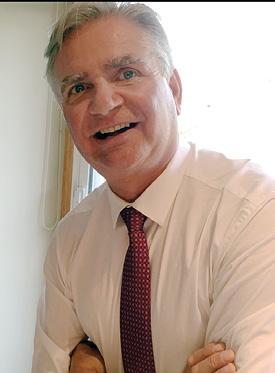
life. However, family meetings can allow people to express opinions in a setting designed for exactly that purpose. An agenda and a set of goals will keep the conversations on track. Emotional outbursts at unexpected times may be a sign of true honesty and raw human interaction and that is good too, but if it is not a part of a broader scope of discussion it may lead to less understanding, not more.
same principles could apply in these situations.
You may consider a professionally trained mediator if the stakes are high and there are serious issues. Research that area and get some legal advice as well.
itou (Nellie McClung Heritage Site), Pilot Mound & District Museum, Manitoba World War I Museum in La Riviere, the New Somerset Museum, Argyle Museum in Baldur, Clay Banks Bison Jump, Badger Creek Museum, Turtle Mountain Flywheel Club in Killarney, Belmont Museum, Irvin Goodon International Wildlife Museum and Beckoning Hills Museum in Boissevain, Hart-Cam Museum in Hartney, Antler River Historical Museum in Melita, Virden Pioneer Home Museum in Virden and Musee Des Pionniers in Notre Dame.
The biggest opportunity we have in Turtle Mountain is to work with the State of North Dakota, and both Canadian and American federal governments to come together and create a worldclass tourist destination that will attract people from around the world to come to International Peace Garden to celebrate the peace between two countries with the longest undefended border in the world.
The last time we had a conflict with our neighbour goes back to 1812. And we weren’t even a country then!
Doyle Piwniuk is the MLA for Turtle Mountain. His column will help promote knowledge and undestanding about this amazing part of our province.
It is difficult to talk about the end of

If it is too difficult, consider getting a third party involved to chair the meetings. For basic discussions, perhaps your financial planner would be able to help. That person would already be familiar with your situation and probably some or all the family members involved. You may have beneficiaries that are not family members. The
I am not a certified mediator, but I have assisted in many family meetings as the financial advisor where knowledge of the situation was critical. For example, by chairing the meeting which involved virtual participation with siblings living miles away the widowed mother was able to explain what her will said and why it was done that way.
It involved business assets that one child was taking over, so life insurance was purchased to provide an inheritance for the non-business heirs. That way the business could stay intact and was much less vulnerable to unnecessary risk.
With the business transfer plan in place the conversation then focused on non-business assets such as the family home, investments, and personal items.
I recommend doing an estate inventory and itemize how you want the significant assets distributed. Are there family heirlooms that cannot be divided? Are some items more sentimental for one beneficiary over another? Is distance to a destination a factor? Or perhaps no one wants some things that you feel they should – like the “china”. Have you ever heard anyone say, “Young people aren’t interested in old stuff”? Logic may come into play for these types of decisions. Having the discussion together about what should happen may save a lot of hardship later.
A good plan will tie all aspects of your estate together. The funeral plans, which can be a discussion for another article, may also be part of the family meeting.
Tom Hyde, CAFA, PAg is an estate and financial planner with Pallister Financial. The information in this article is not intended to be legal or tax advice. You should contact your legal and tax advisors for proper legal and tax advice.
6 lifestyles55.net June 2024
urtle Mou N tai N
t
Portage la Prairie
Tom Hyde Estate planning tips
Doyle Piwniuk News from Turtle Mountain
Joys and perils of driving to our North
Part One, The joys
Volker beckmann
“A British visitor that I was touring asked me to record the sound of trembling aspen leaves quietly rustling in the wind. She had never heard that sound before and wanted to play this natural “music” on BBC radio in England.”
Travelled to northern Manitoba lately? If you drive, Highway 6 is some 750 km long and travels from Winnipeg to Thompson, Manitoba. It is about the same distance as from Winnipeg to Minneapolis or to Thunder Bay. Highway 6 is the primary transportation corridor heading south/north for personal, economic, medical and tourism travel. Thompson is known as the Hub of the North and is the jumping off point for thousands of Churchill visitors each year who take the train in summer and early fall to see and experience beluga whales and polar bears. Such a trip should be on your bucket list. Experiencing such wildlife in their natural state at the edge of the Arctic can be a thrill like an African safari.
Many smaller northern towns and First Nation communities tie into Highway 6 from secondary roads such as from Snow Lake, Cross Lake, Norway House, Lynn Lake, Leaf Rapids, Wabowden, Gillam, Nelson House, Split Lake. The North has a gamut of beautiful places to see and visit. The rugged beauty of the boreal biome offers many lakes, rivers, rapids, other natural features, and campgrounds to camp in, fish, hike, paddle, and breathe in

pure, crisp, clean air. The beautiful, clear blue skies, and amazing displays of northern lights in the fall and winter should act as another incentive to experience the north.
A few years ago in September, one British visitor that I was touring asked me to record the sound of trembling aspen leaves quietly rustling in the wind. She had never heard that sound before and wanted to play this natural “music” on BBC radio in England. Remarkable what visitors notice. Yet, funny how familiarity to a Northerner breeds indifference.
When you live in Winnipeg, you might think such a drive would be like going to the end of the world because it takes eight to nine hours. Of course, you can fly the distance in less than two hours. But that’s a bit pricier. Northerners drive that route many times a year to reach Winnipeg for
a medical appointment, to catch a plane to a holiday destination, to go shopping, attend a sport or entertainment event, or travel on a business trip. We just consider it a drive with four or five pit stops every few hours. No big deal (wink, wink).
On the other hand, in winter, with short daylight hours, snowfalls, and cold weather, it can be a risky and scary drive if the highway is icy. The Department of Transportation does their best to keep it ploughed and safe but doing that in winter is a demanding task when there are limited staff and resources to keep the long highway open.
When the town of Thompson was first born in 1958, there was no road. People and freight all came by train three times a week from Winnipeg. Construction was booming for a decade. Many residents would go to the train station to greet new
people coming to town and get to watch the piles of empty beer cases heading back south! Hundreds of workers lived in construction camps back then. In 1964, the first Provincial Road 391 finally opened to Winnipeg through The Pas. Those 1100 kilometer’s took some 12 hours to drive, and many would do that trip there and back on a long weekend just to get out of town. The road was very rough with gravel and mud. When it rained, bulldozers would pull cars through the muddy sections. We called those people “Pioneers of Thompson.” Most cars in town had cracked windshields and broken mufflers. During dry weather, the gravel wash board was so jarring, your single seat belt would tighten over the bumps. To prevent hip gangrene, you would loosen it and redo it. Gordon Beard was Thompson’s first Conservative MLA, and he got all the blame for not improving the road fast enough.
In 1971, Highway 6 opened from Grand Rapids, which was a shorter fourhour drive. What a blessing! Civilization was so much closer. It existed as a gravel road for many years. Successive governments made constant improvements, and today it is all paved and mostly easy to travel in the long daylight hours of summer. It’s always special to see twilight at 11 pm in June. Today, you can stop along the way to see stunning Pisew Falls, emerald-green Little Limestone Lake, pelicans at Grand Rapids, quiet secluded campgrounds along the way, and enjoy the unique aspect of Paint Lake Provincial Park.
“Part Two next month will complete the story of Manitoba’s longest highway and what is going on this year.”
Stocks high, middle class die – the disconnect between wealthy and “the rest” widens in Canada
As stock prices hit record highs and the housing market continues to climb, the gap between the wealthy and the middle-class in Canada widens alarmingly. This growing disparity paints a grim picture of the Canadian economic landscape, where the prosperity of the few starkly contrasts with the struggles of the many. Despite robust economic indicators, the benefits of massive government spending and interventions appear disproportionately skewed towards the wealthy.
Inflation has become a pressing issue, eroding the purchasing power of middle and lower-income Canadians. Essentials like food, gas, and housing costs have seen significant price hikes, disproportionately impacting those with stagnant wages. While the Bank of Canada aims to control inflation through monetary policy, the immediate effects of hikes are felt most acutely by those who can least afford them through higher mortgage and credit card payments.
phrase). How prophetic.
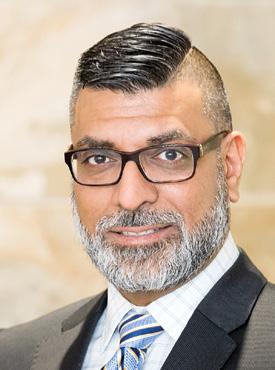 Romel Dhalla On The Money
Romel Dhalla On The Money
Credit card debt is another significant burden for the middle class. With rising living costs and insufficient income growth, many families have turned to their credit cards to cover basic expenses, which is obviously unsustainable. According to recent data, credit card debt has reached record levels, with interest rates often exceeding well over 20%. This debt trap limits economic mobility and exacerbates financial instability for countless households. This is nothing short of modern slavery – let’s just call permanent indebtedness to banks what it is.
The housing market, initially buoyed by low interest rates and now by exceedingly high demand from unprecedented immigration, has seen home prices soar. For many middle-class families, homeownership—the cornerstone of the Western society—has become increasingly unattainable. Plus, the fact that an ever-increasing percentage of Canadian shelter is owned corporately for rent, according the Canadian Housing Statistics Program. This brings life to words spoken by Danish politician Ida Auken at the World Economic Forum in 2016 – “you will own nothing and be happy” (para-
The S&P 500, the world’s primary index of economic performance has seen its value rise over $10 trillion dollars in just one year, to over $44 trillion today. The stock market has been a significant driver of wealth accumulation for the already affluent. The top 10% of households own the vast majority of this wealth, benefiting from rising stock prices and corporate profits. In contrast, middle and lower-income families, who may not have significant investments in the stock market, see little to no benefit from these gains.
Now, before you dare insult me and proclaim me a socialist out to expose the wealthy, that I simply want to “tax the rich” and give to the poor via some mad, eco-driven, DEI infused, wealth distribution scheme (also known as the Carbon Tax), please hear me out – the Devil, you see, is in the details.
Massive government spending and interventions, such as stimulus packages
and low-interest-rate policies, have supported the economy through turbulent times. However, these measures have also disproportionately benefited the wealthy. For example, while emergency benefits like the Canada Emergency Response Benefit (CERB) provided shortterm relief to many Canadians, many Canadian businesses took advantage of the money to invest into the stock market, which surged, further enriching those with already substantial investments. The wealthy have been at the trough of the Canadian Government, happily soaking themselves in a slew of uncontrolled, unaccountable government grants unlike Canadians have ever seen before. Yes, these grants are meant to be a form of wealth redistribution that we are told are designed to help the most vulnerable in our society, but their incentives make the rich richer and dumps money into the economy that boosts inflation. Ultimately, corporate cronyism is essentially taking from the middle-class taxpayer and enriching the wealthy business owner. Everybody knows this, but since the government is doing it, it’s OK for businesses to participate. But it is not, it’s wrong and unethical. Sadly, the justification I hear is often, “I’ll stop when the government stops handing me money.”
Tax policies have also played a role in widening the wealth gap. Tax loopholes and tax avoidance strategies are more accessible to the rich, enabling them to retain more of their wealth.
Implementing simple tax reforms can help address income inequality without veering into socialism. The tax code is cumbersome and requires specialists for the majority of Canadians, which is a clear sign it doesn’t work for most people. It’s chalk full of incentives and disincentives designed to control people to behave certain ways that fit the values of
the government of the day, all the while not materially making any real difference in the outcomes, with some exceptions. I wonder how effective a flat tax system would work in Canada, perhaps it’s worthy of greater consideration given the current system is failing our society. So, I’ve complained quit a bit now. But, I think we must address this growing inequality before it turns into civil unrest. In Canada, I believe we have one of the greatest opportunities in the world to reduce the gap, but only if we have the political will to do so. So far, no Canadian government has had the gusto to really address the country’s problems head on, most rather punt the problems downfield for the next government to deal with, only they never do. So here we are.
The most obvious problem in Canada is that the government is directly in the way of the people and business. As mentioned with tax policy, they could simply re-write the tax code and vastly simplify it. This will be met with the wailing of many a lobbyist and special interest group that currently benefits… it seems today every possibility “identity” or malady has its own group with its own special privileges and perks, but this must end. This is the same logic when applied to subsidizing corporations and protecting industries. Why are we protecting cell phone companies, our dairy industry, our healthcare sector, when the entire world has moved on? We are literally living in the dark ages economically in Canada, we need to catch up. Secondly, stop taxing energy… since the dawn of time, energy has always been the key to a better civilization. More energy allows people to do more things, it’s that simple. Canadians take it for granted because we have so much of it. Thus, it is

June 2024 lifestyles55.net 7
t ho MPS o N
Beautiful Pisew Falls near Thompson.
16 ‘Stocks high’ u
the stars have shone brightly over the Winnipeg Symphony orchestra
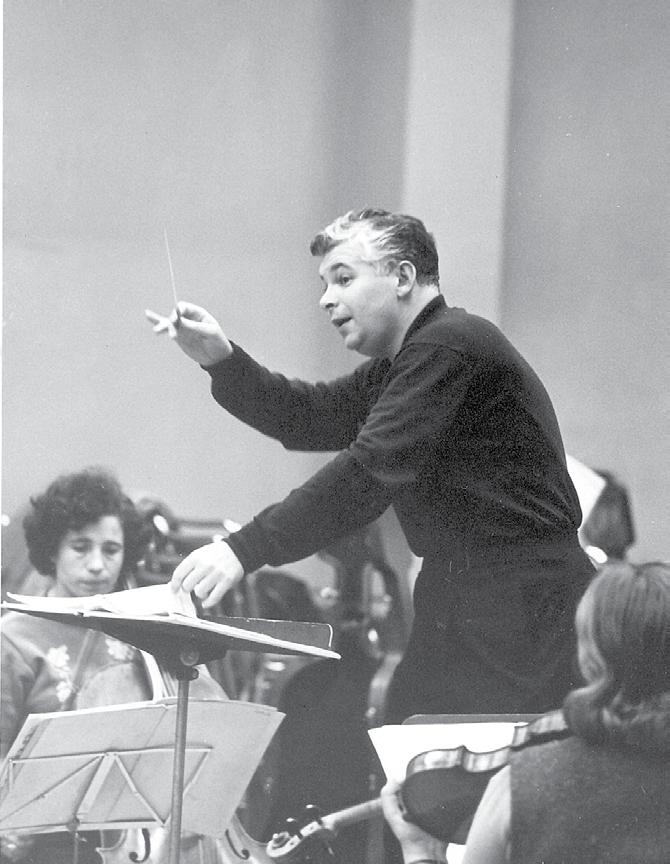
As we celebrate Winnipeg’s 150th birthday, each month music historian and author John Einarson will share stories from our city’s rich and colourful music history. Enjoy.
Classical music has a long history in Winnipeg dating back to the 1880s with the organization of Western Canada’s first Philharmonic Society. Through the dedication and philanthropic efforts of several movers ‘n’ shakers in Winnipeg’s South End over many years, a number of early musical organizations took root. In 1947, the Winnipeg Symphony Orchestra was incorporated, giving its debut concert in December 1948 at the Winnipeg Auditorium (now the Provincial Archives). The Auditorium remained the WSO’s base for the next 20 years until the opening of the Centennial Concert Hall in 1967. The Centennial Concert Hall remains the symphony’s home. The WSO has toured the world, winning accolades wherever it plays. World class resident conductors/music directors such as Victor Feldbrill, Kazuhiro Koizumi, Bramwell Tovey, and Andrey Boreyko have led the WSO. Through an active outreach program, the WSO has brought orchestral music to schools and remote communities throughout the province.
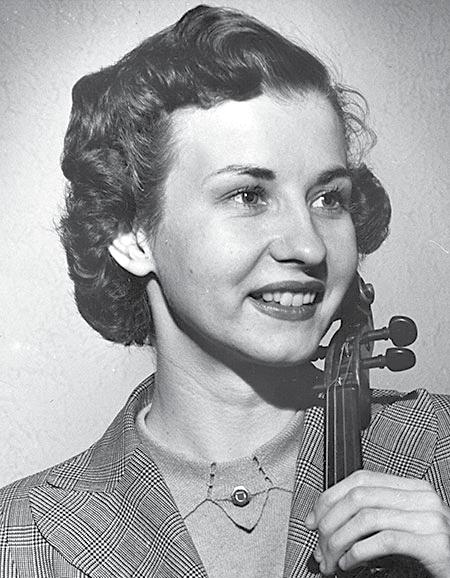
In 1992, Bramwell Tovey and local musician Glenn Buhr initiated the popular annual New Music Festival. The Manitoba Chamber Orchestra, with players drawn from the Winnipeg Symphony Orchestra, was established in 1972.
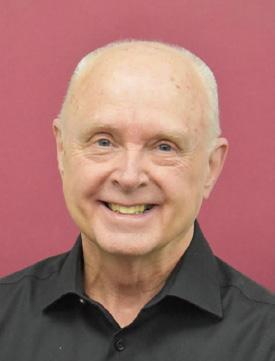
One of the most celebrated musicians to emerge from Winnipeg’s nascent classical music community was violinist Donna Grescoe. Born in Winnipeg in 1927, she began playing violin at age five and by the time she was eight years old she was playing for vaudeville acts at Winnipeg’s Beacon Theatre. At age eleven, Donna won a prestigious scholarship to the American Conservatory of Music in Chicago. A year later she performed at the 1939 New York World’s Fair. Following her performance at New York’s Town Hall, the New York Times declared, “Not only is she already a mistress of her instrument, but she had a sure sense of style and her interpretations gave promise of still deeper insight into the future.” Donna played to a sold-out audience at the Winnipeg Auditorium in 1946 and made her first appearance at New York’s Carnegie Hall in 1948. In 1955 she made her North American television debut on Ed Sullivan’s Talk of The Town show. Donna went on to be featured with symphony orchestras across the continent before re-

turning to Winnipeg where she became a much-loved violin teacher. She also helped found The Manitoba Conservatory of Music and Arts that continues to this day.
Born Sara Katznelson in Winnipeg to Russian-Jewish parents in 1918, as Zara Nelsova she went on to become a renowned cellist after relocating to London, England. She studied under the great Spanish cellist Pablo Casals, regarded as the pre-eminent cellist of the twentieth century, and at age thirteen was a featured performer in concert with The London Symphony Orchestra. While serving as principal cellist for the Toronto Symphony Orchestra she made her US debut at New York’s legendary Town Hall in 1942. Russian cello master Mstislav Rostropovich called Nelsova the greatest woman cellist in the history of the instrument. In 1966 she became the first North American cellist to play in the Soviet Union. She was a featured performer with orchestras across North America. Nelsova went on to teach at New York’s prestigious Julliard School of Music.
Winnipeg born cellist Lorne Munroe served as principal cellist with the New York Philharmonic under conductor Leonard Bernstein where he was a featured soloist some 150 times in a 32-year career with the Philharmonic, making him the longest serving principal orchestral cellist ever. He also serving that role with the orchestras in Philadelphia, Cleveland and Minneapolis. He, too, went on to teach at Julliard as well as at the Philadelphia Musical Academy.
Thorvaldson Care Center – Celebrating 65 years of caring for the elderly
Family has been the key to the success of the Thorvaldson Care Center since its inception in June 1959. These past 65 years have been an exciting journey for the four generations of the Thorvaldson family. On June 6th, 2024, the family will host a 65th birthday party at their Care Home to celebrate and reminisce about the journey that brought them to this day.
In 1959, Herman Thorvaldson and his parents, Valdi and Lilja, purchased a 38bed Convalescent home that had been owned by Herman’s aunt since 1932. Operating as the Thorvaldson Nursing Homes (at 5 & 7 Mayfair Place), the ambitious and arduous task began for the family. Lilja worked as ‘Matron’ and licensee of the home, and Valdi and Herman helped in various capacities while maintaining full-time employment elsewhere.
At the same time (1959), the Nursing Home Association of Manitoba (now known as the Long Term and Continuing Care Association of Manitoba) was founded. Herman was one of the original members and was Chairman from 1962 to

1978. That same year, he also became a founding member of the Canadian LongTerm Care Association, which is now located in Ottawa.
In 1980, the provincial government only sanctioned and funded newly built care facilities, so, being an older home, the decision was made to sell the property. As a result, the operation relocated a short distance away to its current address on Stradbrook Ave in the Osborne Village area. Herman and his wife, Julia, continued to care for the elderly, operating under a new name, the Thorvaldson Care Center- an ‘Intermediate’ Care facility – catering to those elderly who were seeking a lighter level of care than provided at the original nursing home.
Unfortunately, Herman would not see Thorvaldson Care Home’s 65th anniversary this June after passing away in April 2023. The facility he designed and built is now overseen by the family's third and fourth generations, with daughters Jocelyn and Karen and granddaughter Ally continuing to operate the only Intermediate Care facility in Manitoba.
The Center provides a higher level of health care and supervision than other housing options in the community. It is

an ideal home for those who can no longer manage their living situation yet are not ready to be placed in a Personal Care Home. This facility provides 24-hour care/support by on-site Health Care Aides and a full-time Registered Nurse for those who need assistance managing physical limitations or cognitive issues. Residents receive comprehensive support with activities of daily living, including medication administration, bathing, dressing, grooming, and hygiene. Meals, housekeeping, laundry, and recreational activities are provided.
The family has always strived to set the bar high when caring for their clients. That was exemplified during the COVID pandemic when they sought and installed leading-edge air purification technology in their HVAC system that successfully
prevented any outbreak and transmission of COVID-19 within the facility. Today, that technology protects Thorvalsdon’s residents from other airborne and surfacedwelling germs and pathogens.
It can be said that there is something special not only about the type of care provided here but also that having a family running a business and looking after other families' loved ones makes a difference.
The Thorvaldson family feels privileged to provide compassionate care for seniors who are at a particularly vulnerable time in their lives, and they have worked earnestly to maintain integrity throughout the years.
Over the past six and a half decades, the Thorvaldson family has always sought to provide a moderately sized, non-institutional environment with the services to meet the needs of those in the later stages of life. They have sought to maintain a quiet, comfortable atmosphere where residents feel cared for and safe in a home-like environment. The family's primary goal has always been maintaining their residents' health, vitality, and quality of life. They feel they have been blessed with good staff, good luck, and a good reputation.
8 lifestyles55.net June 2024
John Einarson Winnipeg City of Song
Donna Grescoe.
Zara Nelsova.
Victor Feldbrill.
gord gage
Martha Frohlinger was a leading Manitoba astrologer
Ihave long had a fascination with the paranormal – ever since coming across writings related to Edgar Cayce and The Sleeping Prophet when I was still a teenager. I have also over the years read stories of others who foresaw the future or exhibited abilities that were beyond normal. And during the course of my career, I have had the opportunity to interview some who exhibited paranormal, or psychic, ability.
One such individual was astrologer Martha Frohlinger. The first and only time I interviewed Martha was in the late 1980s. Martha was the only astrologer I have ever written about.
According to the Manitoba Historical Society’s listing of “Memorable Manitobans”, Martha taught beginner and advanced classes in astrology, founded the Manitoba Astrology Association, hosted a weekly astrology program on Shaw Cable, and was inducted into the Astrology Hall of Fame.
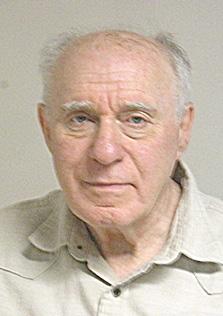
“I think that what made Mom a really good astrologer was her passion for people,” her son, Tom, comments. “She was very good at reading people. She could tell a lot about you that you might have known about yourself.”
At the time I interviewed Martha, we didn’t get into her past. I knew she had come to Canada as a Hungarian Jewish refugee in 1956. But, in a conversation with her son for an article in the Jewish Post last year, I learned that her life had taken many twists and turns as she continually reinvented herself.
The most amazing part of her story, Tom recounted, is how she survived the Holocaust by hiding in plain sight by pretending to be the wife of a highranking Hungarian Nazi who was actually sympathetic to the Jews. She was able to use her disguise with the knowledge of her pretend husband to save the lives of her daughter, Agnes, and several family members as well as many other endangered Hungarian Jews.
According to Tom, his mother grew up in Budapest, along with her younger brothers, in an upper middle class secular Jewish family. Their father was from Vienna, their mother from Budapest. Their parents operated a business buying and selling high end petit point textiles for the European market.
Martha, at a relatively early age, married Sandor Gordon in 1936 and, in 1939, with their then twoyear-old their daughter, Agnes, the young couple moved to Paris. They moved back to Budapest a couple of years later.
“It was becoming very difficult for Jews in Hungary by the early 1940s,” says Tom Frohlinger who was born after the war’s end. “My grandfather sent his oldest son to England where he had a lot of contacts through his business. Mom and her other brother remained in Budapest and helped run the business.”
In 1943. Sandor Gordon, Tom’s birth father, was conscripted into the Hungarian army’s forced labour
battalion and sent to the Russian front. He ended up in a Russian POW camp. In Budapest, the family was forced to sell the business and were ordered to move into the Jewish ghetto. Instead, Martha, her daughter and her parents went into hiding. Her brother in Budapest disappeared some time in 1944.
Tom doesn’t know exactly how his mother became connected with the Hungarian official, but she and Agnes moved in with him, living in a villa in Buda with enough room to hide her parents and other relatives.
“Because rationing was in effect,” he notes, “it was difficult to feed nine people on rations for three. I am sure that my mother turned to the black market. She was very resourceful, quite good at looking after the needs of her family.”
He goes on to add that because Martha was thought to be the wife of an important government official that she enjoyed carte blanche to go in and out of the ghetto at will and consequently was therefore involved in helping many Jews to get the Wallenberg visas which saved their lives.
Tom doesn’t know the name of the Hungarian official but does report that he heard that the man left Hungary at the time of the 1956 Hungarian Revolution and believes that died in Argentina in the mid1960s.
In 1945, Sandor came back from the prison camp and rejoined his family. The reunited couple opened a haberdashery store in Budapest.
In 1948, following the Communist takeover of Hungary, Tom’s maternal grandparents moved first to Israel and later to Vienna. By 1951, the Communists had taken full control and nationalized everything. “Dad retrained as a millwright while mom became a housewife,” he says.
Sandor Gordon died in November 1956, at the height of the Hungarian Revolution. Despite her personal tragedy, Martha again swung into action.
“Mom was an enterprising woman who was able to adapt quickly and still had some political connections,” he notes. “The border with Austria was open for just two or three weeks – but the border was mined. People fleeing Hungary still needed guides to get them through the mine fields and safely into Austria. Mom helped a lot of people get out. I remember many relatives, friends and strangers stopping by our apartment in Budapest to get the details of the routing arrangements and say good-bye.”
The next year, it was the turn of Martha and Tom to leave. “Mom used her connections to get us passports for the two of us to go to Vienna,” Tom recalls. “It was almost unheard of at that time for anyone to be allowed to leave the country. We left Hungary in early September 1957 and sought and were granted asylum in Austria.”
Knowing that she would need to find a way to support herself no matter where she might end up,
Order of Manitoba 2024
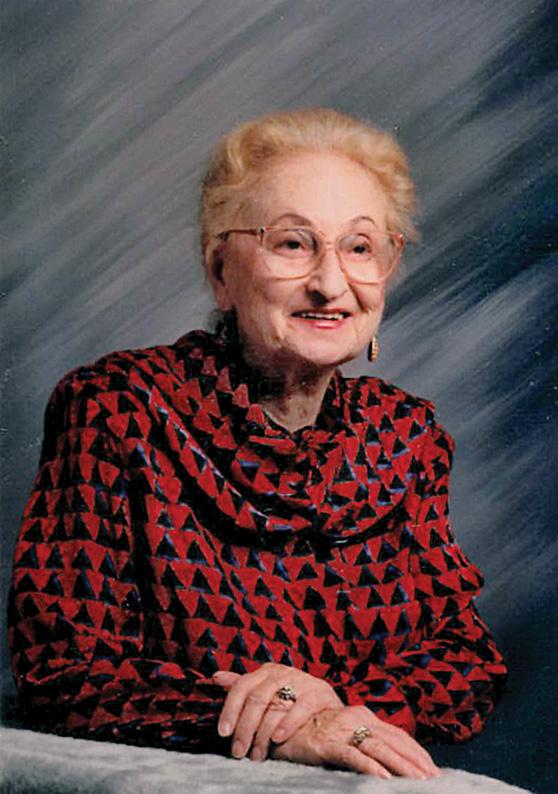
Tom recounts, his mother trained in Vienna to be a hairdresser. It was also at that time that she began to seriously pursue her growing interest in astrology studying with a well-known Viennese astrologist. Martha, with young son, Tom, in tow, came to Montreal as a refugee in 1958. Her brother, David, was already in Montreal. Martha promptly got a job working in a hair salon and, Tom notes, within a few months, she owned the business.
In 1962, she added “farm wife” to her growing resume when she married fellow Hungarian Jewish refugee Louis Frohlinger. “Mom felt that I was at the age where I needed a strong father figure,” Tom observes.
Louis Frohlinger was among a small number of Hungarian Jewish farmers who immigrated to Canada after the war and settled in the Hamilton-Niagara area, among them Louis’ friends and a cousin from Hungary.
“Louis was a great father,” Tom says. “He taught me the importance of having a moral compass and strong work ethic.”
While Louis and Tom farmed, the ever-enterprising Martha opened a hair salon in a nearby community.
She came to Winnipeg in 1975 after Tom had moved here, with Louis following later after selling the farm. It was only after coming to Winnipeg that Martha became a professional astrology and a leader in the field in Winnipeg.
Martha Frohlinger passed away about 20 years ago at the age of 89.
Congratulations to all the new Orders of Manitoba, a very deserving lineup or exceptional individuals.
Myrna Driedger, a former registered nurse, and a leader and advocate for missing and exploited children, was a Progressive Conservative MLA for 25 years who served two terms as Speaker. Myrna is the founder of the Nellie McClung Foundation. She was Chair of the Canadian Region of Commonwealth Women Parliamentarians and served as the Vice-Chair Commonwealth Women Parliamentarians International. She was recognized with the 2023 Commonwealth Parliamentarian Lifetime Achievement Award.
Murray Sinclair, the former senator who chaired the Truth and Reconciliation Commission of Canada. He was the first Indigenous judge appointed in Manitoba.
James Cohen, President and CEO of Gendis Corporation, and a member of rock band Prairie Roots Rockers. He is a well-known supporter and board member of Winnipeg arts organizations.

Michel Lagacé has spent a lifetime serving the arts community as chair of organizations such as the WSO, Arts Stabilization and Société historique de Saint-Boniface.
Mae Louise Campbell, a Métis/ Saulteaux elder who has spent 45 years working with Indigenous women. Elder Campbell was also a member of Canada’s National Task Force on Trafficking of Women and Girls in Canada.
David Johnston, who founded the benefit plan company Johnston Group, a benefit plan company that also funds multiple special projects supporting the work of well over 100 community organizations. He also developed the Johnston Family Foundation that supports anti-poverty and addiction.
Ron Paley, long time musician who
Bob Williams, owner of Swancoat Investments is a philanthropist who has donated many millions of dollars and his time to such organizations as the Winnipeg Art Gallery/Qaumajuq, the Royal Aviation Museum of Western Canada and FortWhyte Alive. He serves as an honorary colonel with the Fort Garry Horse Regiment.
toured internationally playing electric bass with the big bands of Buddy Rich and Woody Herman, recording multiple albums, including a song on The Main Event with Frank Sinatra. He formed the Ron Paley Big Band in 1976 and received the BreakOut West Western Canadian Music Awards’ Heritage Award for significant contributions to the music industry.
Connie Walker, United Way president, who has inspired volunteers, donors and partners to help youth and assist families to move out of poverty, while improving the health of people and their neighbourhoods.
Chad Swayze, firefighter and community fundraiser who was instrumental in Winnipeg successfully hosting the 2023 World Police and Fire Games.
Dr. Marcia Anderson, the public health lead for Manitoba’s First Nations COVID-19 response team.

June 2024 lifestyles55.net 9
Myron Love
Martha Frohlinger.
Myrna Driedger.
Peruvian chicken, it packs
Like many of you, we like to add a little spark to our food once in a while. Well, this dish will add not only the spark but the umami we crave.
I have never made this dish before but I recently met a man from Peru and during our chat, he told me about his traditional ‘Peruvian Chicken’ dish, giving me an insight into the flavour and explaining that it would be something I would find unique. He wasn’t wrong!
good
The Super Cilantro Jalapeno Sauce
2 jalapeños roughly chopped. 2/3 cup fresh cilantro leaves chopped.

Peruvian Chicken is succulent, juicy, flavorful, and extremely easy to make! Basically, it’s marinated, then barbecued, and is good enough to eat on its own, or with a side of Cilantro Jalapeño Sauce.
If you like fried chicken be sure to try this out, my wife gave it a 10 out of 10 and believe me that was a first.
Here is what you will need:
6 large chicken thighs.
2 cloves garlic peeled and chopped.
1/4 cup light soy sauce
3 teaspoons lime juice
1 ½ tablespoons extra virgin olive oil
1 teaspoon cumin
1 teaspoon paprika
1 teaspoon dried oregano Black pepper to taste.
(No salt is required due in part to the soy sauce)
2 green onions, chopped.
2 cloves garlic peeled.
1/2 cup mayonnaise
1/4 cup Greek yogurt
1 tablespoon lime juice
Pinch of freshly ground salt and cracked black pepper.
The all important How to:
Marinate the Chicken: Place the garlic, soy sauce, lime juice, olive oil, cumin, paprika, oregano, and black pepper in a large bowl, mix together thoroughly.
Wash the chicken thighs cleaning all the residual blood and fat away. Pat dry then place the chicken inside the bowl of marinade and stir until all the chicken is coated. Seal the top with saran wrap and place in the fridge for at least eight hours. The longer the better.
Making the Cilantro Jalapeño Sauce: Combine jalapeños, cilantro, green onions, garlic, mayonnaise, Greek yogurt, lime juice, salt, and black pepper in a blender. Blend until smooth.
Place inside a sealable container and refrigerate until required.
Preheat the barbecue to mediumhigh heat (around 350-degrees). Take the chicken out of the fridge discard-



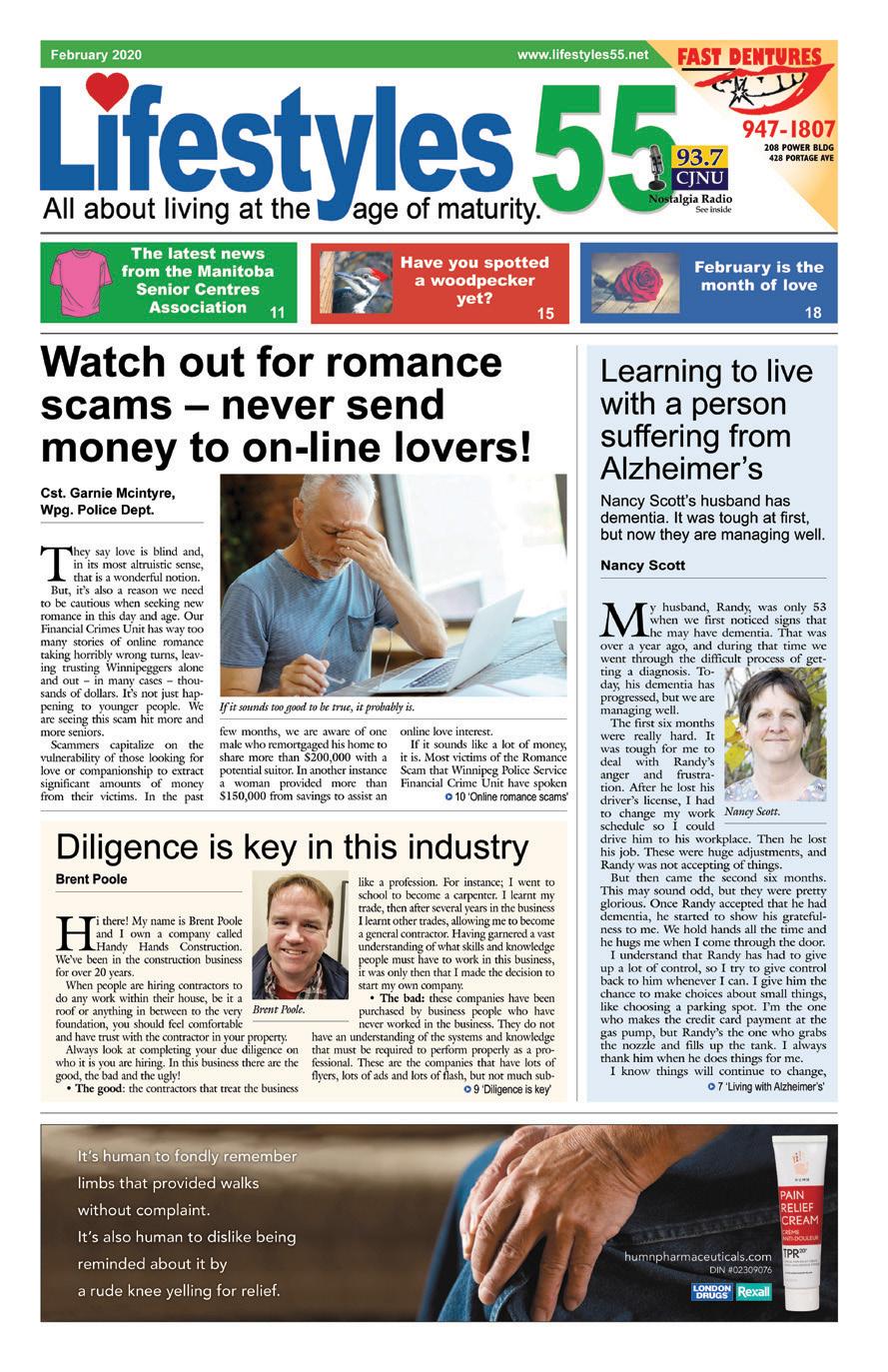

ing the saran wrap. Once the barbecue is at the desired temperature place each piece of chicken on to the grill. Grill on medium-high for 5-6 minutes per side, closing the lid to retain heat. The chicken is cooked when in-

ternal temperature reaches 165°F. To serve, we had salad and fried baby potatoes, but you can do whatever you want. Enjoy. Ian Leatt is a trained chef from across the pond.







10 lifestyles55.net June 2024
punch, and is so damn
Call us at 204-940-2700 to get your hands on a tasty copy for yourself or a friend for only $29.95 Plus taxes and shipping. For every copy sold through Veseys, Pegasus and Veseys will donate one dollar to the Food Banks Canada organization. A Collection of Culinary Memories, a new cookbook from our resident foodie Ian Leatt featuring 196 pages of nostalgia-fueled recipes has arrived! Sponsors:
a
Veseys Seeds Ltd.
Stuffed Tomatoes, page 104 Salmon Papilotte, page 132
Chocolate Lava Cake, page 158
q $36.00* for 12 issues q $72.00* for 24 issues *Plus applicable taxes q Cheque q VISA q Amex q MasterCard Card # Expiry Security # ........................ Signature Name Address City................................. Prov............ Postal Code ....................... Telephone............................. Email............................................... Connect with us online: lifestyles55.net | Facebook: Lifestyles55 Don’t want to miss a single issue of Lifestyles 55? Call us at 204-940-2700 and we will help you purchase a subscription to bring the paper right to your door! Or fill out the form below and mail it to: Lifestyles 55 c/o Pegasus Publications, PO Box 47040 RPO Marion, Winnipeg, MB R2H 3G9
Beef Stew, page 186
Ian Leatt Foodies
Planning for your safety is part of travel planning
If the photos I see on Facebook are accurate, it seems that most of my friends are travelling in Italy, walking the Camino de Santiago, or cruising to Alaska. It is also possible that my friends only post photos when they are engaged in travel activities that induce dreams of travel and adventure for those who remain at home.
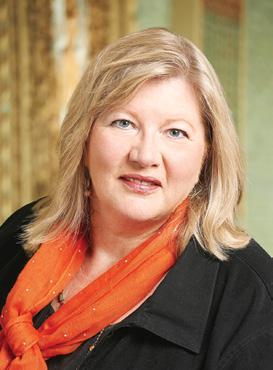 Trudy Schroeder Random Notes
Trudy Schroeder Random Notes
The friends return home with tales of the sights, sounds, smells, and tastes of foreign lands. They occasionally also return with harrowing stories of unexpected dangers and misadventures. Inspired by some of these stories of incidents that could have been quite dangerous, I asked friends and family members who travel frequently how they plan and prepare to remain safe and secure as they travel in exotic locations.
When I asked these travel gurus about the most important measures to take as they travel, quite a number of them said that the worst thing they had experienced on their travels was having their passport stolen or destroyed. The complications of having passports replaced are significant and are certainly one of the main reasons that travellers visit Canadian embassies in countries around the world.
Of course, the best thing to do is keep your passport safe while you travel. For most people this means keeping the passport in a safe location on their person while in transit. Most of the men I spoke with talked about secure pockets in shirts or cargo pants that they used to carry their passports. Women have special passport security belts, welldesigned security travel pouches, or even infinity scarves with secret storage compartments that are used to store the passport and a basic amount of cash in case a purse or travel bag with the wallet is stolen.
People who like to keep passports or valuables in a purse are advised to be very careful with their purses and be aware that the purse can be a frequent target for thieves. Hanging a purse on the back of a chair in a restaurant or coffee shop is one of the frequent ways of making a purse accessible to thieves. Most travellers advised making photocopies of the key identification pages of the passport and leaving a copy at home with family members or friends. It is also wise to put a copy in some other location in your luggage and keeping a photo of those pages on your cell phone as well.
One frequent traveller recommends looking at the Travel Advice and Advisories section of the Canada.ca web site. This resource has listings of travel destinations and provides specific advice on the travel safety levels and types of difficulties that might be encountered in international destinations. Everything from natural disasters to kidnapping are outlined. Even if you have travelled to an area frequently, it can be well worth your time to double check on the current advisory status of that country. There can be political, social, economic, or public health issues that may have changed in that country since your last visit.
The Government of Canada also provides a free service that allows Canadians who will be travelling or residing abroad to register for information notifications to be sent to them. If there are emergencies in the country in which you are travelling or major issues at home, you would be sent a notification. This seems to be a very wise addition to your travel planning process. For information on this service, look at Registration of Canadians Abroad - Travel. gc.ca
Meet the Editorial Board
Welcome to all our new readers of Manitoba Lifestyles 55. Originally published solely for a Winnipeg audience, we have been working to expand our reach to all of Manitoba with the goal of fostering more understanding and knowledge between communities. To help us in this endeavour, we have created the following editorial board.
Doyle Piwniuk, Turtle Mountain; Kelvin Goertzen, Steinbach; Wally Daudrich, Churchill; Crystal Kolt, Flin Flon; Doug Lauvstad, The Pas; Tom and Janice Hyde, Portage la Prairie, Volker Beckmann, Thompson; Marchall Murdock, Fisher River Cree Nation.
We are still looking for two reps, one in Parkland and one from the mid-eastern part of the province.

Apparently virtual kidnappings have become a regular occurrence in travel destinations such as Mexico. If family members are contacted to pay ransom related to a kidnapping, the family members are advised to contact the Canadian embassy in the country for advice before making payments. Checking the travel advisories for countries you are considering visiting and registering your visit abroad seems a very wise and safety conscious approach. Keeping in touch with friends and family members as you travel and ensuring that some people at home are aware of your travel itinerary is an important part of
your safety planning process. If you are feeling unsafe in any situation, send a note to a trusted family member or friend, or send a location pin to identify your location even if you are in a taxi. This can be helpful if assistance is needed.
One family member who has travelled extensively in challenging countries and areas of the world says that a big part of remaining safe is developing a type of walk and demeanor that indicates to people in your environment that you would not be an easy target for crime. He says it is not a question of being overly assertive or menacing. It is a question of moving through the environment without encroaching on other people’s space, moving decisively and confidently without drawing attention to oneself. This may be more complicated than it seems and somewhat difficult to practice, but apparently once one has mastered this skill, it makes all the difference in the world. We know that there are many joys and discoveries related to travelling, and we know that most of the people we meet around the world are not a danger to tourists. However, there are enough travel misadventures that occur to Canadians that it is well worth the time to take basic precautions and remain vigilant and aware of potential dangers as we explore the world.
Trudy Schroeder is the former CEO of the Winnipeg Symphony Orchestra and twice ran for the provincial NDP.


Choosing funeral and cemetery plans can be overwhelming to a grieving spouse. Plan the details now. Together. Order your FREE Estate Planning Kit by calling or visiting the locations listed below.
Chapel Lawn Funeral Home & Cemetery 4000 Portage Ave., Winnipeg, MB 204-982-8100

Glen Lawn Funeral Home & Cemetery 455 Lagimodiere Blvd., Winnipeg, MB 204-982-7557
Glen Eden Funeral Home & Cemetery 4477 Main St., West St. Paul, MB 204-982-8300
Desjardins Funeral Home 357 Des Meurons St., Winnipeg, MB 204-233-4949

*Research conducted by Willful and Arbor Memorial Inc. in a 2020 survey.


June 2024 lifestyles55.net 11 Arbor Memorial Inc.
66% of Canadian families haven’t discussed their final wishes*
CLIENT: Arbor Memorial BLEED: NA DOCKET: D025121 TYPE SAFETY: 0.375” NAME: Lifestyles Ad COLOUR: CMYK

it’s 2035 and the sun is shining on a new port in Manitoba NeeStaNa N : all of Us
It’s April 2035. The sun is beaming down on a bustling port in Manitoba’s far north at Latitude 57, not that far from the mouths of the famous rivers, the Nelson and the Hayes. These rivers opened up the northern part of the North American continent more than four centuries ago.
It was a silent land then, sparsely populated by people but rich in furs and well sustained by the local Indigenous folks who lived in harmony with the land as it was then.
Now, life has changed. The planet’s population has become one and local trading is worldwide. Shipping is a vibrant activity as man expands across the seven seas and even into space. The new port is aptly called Port NeeStaNan, “all of us”, named for the utility corridor the First Nations communities created and built over the previous decade.
The new town
The townsite supporting the port is a polyglot of people from all over. Cree and other languages can be heard as you walk down the well ploughed streets. There is still snow on the ground – it is only April, after all. There is much construction – the port is still growing, but subdivisions have already sprung up around the edges of downtown as local people leave reserves and come to a place where there are well paying jobs and new modern housing that families can legally own. And they can aspire to ownership now because the cost of heating those homes has dipped exponentially. No longer does 50 percent of their winter income go into heating bills. They can now access petroleum products at very low rates, and some are even looking forward to heating with hydrogen once the plant up the coast goes into production in a year or so.
Downtown is becoming a shopper’s dream as goods flow in from all over. There is nothing you can buy in Winnipeg that you cannot buy here first – and at lower prices. This is all part of the standard agreement signed with importers that all goods will include a wholesale residual for NeeStaNan merchants to sell locally. They expect a lot of traffic from the tourist crowd that starts showing up in Churchill early in the summer. Churchill is only a couple of hundred clicks up the coast and Wally
Manitoba’s Gateway to the
world
Daudrich and his Lazy Bear Excursions are already planning weekly trips to the new port on his brand-new ocean cruiser.
The population is young and vibrant with their kids growing up with the town. There is a new school for K to 13 and the University College of the North is expected to accept classes in the next few years as the eligible population grows. A hospital opened in 2032.
Business is coming from all over
All this activity is fueled by exports flowing from across Canada and now even up from the northern United States as exporters seek closer access to markets. NeeStaNan Rail is constantly busy and there is talk of twinning the line to accommodate the increased traffic. Right now, the train delivers heavy loads of mineral deposits from the mining industry in northern Manitoba as well as potash and machinery from Saskatchewan, and various petroleum products from Alberta, which is planning to build a pipeline along the NeeStaNan right of way in order to respond to the new mandate from the latest COP meeting that has decided the best way to reduce carbon emissions is to help countries reduce their reliance on burning coal and particulate matter by sending them LNG.
The Port is modern and bustling with activity
Port Neestanan is a deep-sea port, capable of handling the largest ships plying the oceans. It is not like the old days where ships pulled up to shore. Port Neestanan uses the same technology as other northern ports. Ships are loaded in deep water via wharf extensions and other technology. Ironically, a deepwater manmade island five miles offshore mimics the attempts to create the port back in the early 1900s. In addition, an undersea pipeline is being constructed to transport LNG to tanker ships.
Leaders from Fox Lake Cree Nation and York Factory First Nation, which were part of the development of the line and the port, have drawn out talent both from home and from other communities as folks see the opportunities and get excited about the future.
Local Indigenous communities, even those more isolated ones such as Shamattawa, are seeing an end to addiction problems as kids can get off the reserves and find real jobs that promise a future. There is much healing to
be done but progress is being made towards reconciliation as people learn to respect and enjoy each other and their differences.
The benefits have spread down south Down in Winnipeg CentrePort has grown exponentially. In town, street renewal has eliminated potholes. The drug plague of the 20’s has been addressed with a network of treatment facilities. The homeless have housing in tiny homes that they can buy at rates that match their incomes. Everyone has a job. There is so much activity thanks to the $60 billion in income NeeStaNan is generating for the province that welfare, while available at much higher rates than previously, has become a last choice option. Manitoba has regained its reputation as a world leader in medicine and there are no waiting lists for surgeries.
Southern Manitoba is gratefully taking up the overflow of population as newcomers flock to Manitoba. The creative people of the farmlands are developing new technologies for food production as well as the machinery to plant and harvest it and jobs are plentiful.
In the mid north, The Pas, Flin Flon, Snow Lake and Thompson all have new life thanks to the demand for critical minerals and Manitoba’s ability to get the product out to market.
And Churchill? It has become the prettiest townsite in the country, living up to the early promises of its city planner. The harbour is filled with cruise ships all summer with visitors from all over the world sailing the northwest passage and making a trip to see belugas and maybe see some polar bears in the open bay, a key part of the journey. For inlanders, the Arctic Gateway rail line has become a must-do as Via Rail has upgraded its railway cars to provide a first-class experience.
The future is filled with more good things as the Neestanan utility corridor continues to build dedicated railroads in Saskatchewan and Alberta, adding more access to the northern line, easy connection to Port NeeStaNan and from there to the world!
Ah yes, we’re dreaming, but nothing happens without dreams followed by action. Let’s make this dream a reality, Manitoba. We can do it!
u 400 years of history with Europeans
Continued from page 1
Groselliers visited the Bay and returned to England with his ship, the Nonsuch, laden with beaver furs. This expedition was so successful that it spawned the establishment of the Hudson Bay Company in 1670.
In 1684, York Factory, a hop, skip and a jump from Fort Nelson at the mouth of the nearby Hayes River, was built establishing the prime fur trading site on the southwestern Hudson Bay for the next 250 years, although many trading posts were established throughout the north throughout that period.
In 1690, Henry Kelsey, who worked for the Hudson Bay company for 40 years, became the first European to see the Canadian Prairies, travelling from York Factory to the interior via the Hayes to the Carrot River and thence to the Assinibioine.
The relationship between the traders, both First Nations and European, was generally mutually beneficial, each partner getting what they wanted or needed from the transactions, but there were times when the contact was unhealthy such as with danger of the transmission of European diseases. Northern First Nations began getting smallpox vaccines as early as 1782, not long after the vaccine was discovered, to prevent decimation of the native traders and destruction of the fur trade.
In the early years, inland travel took place along the mighty rivers that flow north from the west and the south and drain into Hudson Bay.
The mouth of the Nelson and the Hayes rivers has always been a natural inland entry point and it remains so. This part of the Bay is also a natural exit point for goods from the resource-rich prairies to the world.
But what about Churchill?
Meanwhile, things were also opening up at the mouth of the Churchill River, 300 km to the northwest. In 1717 and 1731 respectively, Fort Churchill and Fort Prince of Wales, were constructed in this sheltered natural harbour. Much would happen there. In 1769, for example, the very first Canadian astronomical observations of the aurora borealis took place here. Churchill became an important ac-


Port Nelson in 1918: Bunkhouses and warehouses in the foreground, with the train bridge out to the terminal on the island in the middle of Nelson River in the background.
cess point for trade and other endeavours in its own right. By the 1880s commercial interests had moved from the trade of animal pelts to the export of grain. The feasibility of a railway to a northern port began to be examined. By 1913, after much political wrangling, it was agreed that a rail line north made sense and Port Nelson was chosen as the destination for the terminal because of its shorter distance to tidewater and the better terrain upon which to build the rail bed.
The rail bed was built without fuss, but the port was a different matter. Due to the large amount of silt pouring into the bay, the shoreline was shallow, so it was decided to build an “island” offshore in deeper water and to do this required the construction of a 17-span, steel railway bridge to the island. Both of these constructions still stand as testimony to the ingenuity and hard work of the crews in what grew to a thousand-person town to support the development of the port. But there were other challenges, including a lot of bureaucratic bungling in Ottawa, fierce storms on the bay, and a world war that was sucking up money and men.
After a busy 1917, one year later saw a complete shutdown of the burgeoning town. The plan and all the work were abandoned. It had always been a controversial project, in part due to the fact that it was fiercely rejected by a disappointed Ontario which had wanted this port to be included within their boundaries. Their loss of this territory was not taken lightly.
Several inactive years passed, and it wasn’t until 1925 that the decision was made to move the line to Churchill, despite the unreliable muskeg railbed. The naturally sheltered and somewhat deeper port was held out as the chief reason for the change of plans which now moved ahead with all speed. The first shipment of grain left Churchill in 1929 and the port was completed in 1931.
Sadly, Churchill never lived up to its promise and there were rumours about closure until the second world war gave it new life with the establishment in 1942 of a joint US Canada training base at Fort Churchill five miles away where it continued to support the town until it closed in 1980. During the late 1950s to the early 1960s the population peaked at nearly 7,000.
Today, Churchill is much more acclaimed for its populations of polar bears and curious beluga whales that migrate in the tens of thousands to the mouth of the Churchill River to birth their offspring. The main industry is now eco-tourism, but most of the population, almost 40%, works for the government in administration or health and social services, not counting education.
Today, the permanent population has shrunk to about 870 people serving a trading area of about 3,800.
Perhaps the town should make up its mind to concentrate on the travel trade, pushing belugas, polar bears, and wilderness tours in the summer and northern lights in the winter, sprinkled with historic lore (Fort Prince of Wales) and perhaps overland and sea voyages to wherever the new port ends up being built.
There is a win-win in the NeeStaNan project that expects Churchill to prosper far beyond its wildest dreams of today.
12 lifestyles55.net June 2024

NeeStaNa N : all of Us
Manitoba’s Gateway to the world
NeeStaNan rail will
be an
asset to arctic gateway u NeeStaNan: a road to the world
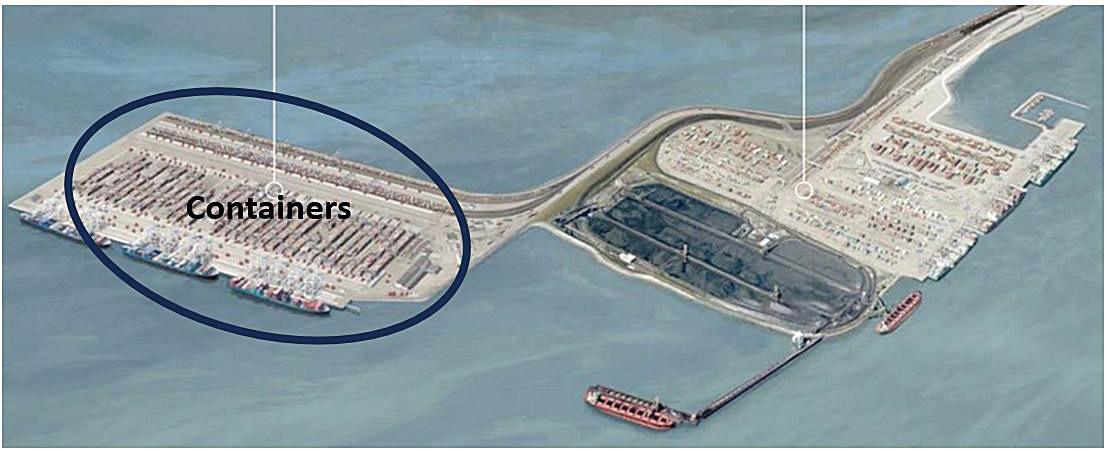
there was first launched, the chosen destination was 300 km (180 miles) southeast of Churchill at the mouth of the Nelson River.
And it is not either/or. There is no rule saying that only one port is feasible – Hudson Bay is a gigantic bay and, even centuries back, it was realized that more than one entry point to the continent was not only possible, but it was also desirable for different reasons.
The basic pros and cons of Port Churchill
1. Churchill Harbour Advantage: Churchill is a naturally sheltered harbour with better shore access at deeper levels (but not that deep – the depth there is only 26 to 30 feet as opposed to the port of Nova Scotia at 67 feet). Dredging is used to mitigate this shallowness.
2. Churchill Port Advantage: The port is viable for use by some ocean traffic including cruise ships in summer as well as supply ships and the movement of other goods and commodities like grain, potash, and bitumen.
3. Churchill Infrastructure Advantage: The town infrastructure is all in place and Churchill has a place on the world map. This is great for tourism, which is a vital part of the local economy. This could be improved and expanded if the money and the will were there.
4. Churchill Port Disadvantage: The existing facility was built a century ago and is in disrepair, which can be fixed with investment, but the port facility will be limited in what markets it can serve. When the port was built, ships were much smaller. Today large container ships require more room to dock and room to maneuver in. The large, 400-metre container ships can also have a draw of 50 feet or more than Churchill Port can accommodate without dredging.
5. Churchill Season Disadvantage: One advantage to Port Churchill is its natural shelter from the elements, but this is also a disadvantage in that it keeps the fresh water from the Churchill River from dispersing. All this fresh water means heavy ice in winter months. It freezes solid, limiting the use of the port to five months at the very best.
6. Churchill Railbed Disadvantage: The last 250 km of railroad from Amery to Churchill is built over muskeg subject to discontinuous permafrost that compromises the stabil-
ity of the line without constant and expensive maintenance. It is unlikely to be able to sustain the heavy traffic required to meet the needs of an international port. Even with repairs done over the past two years, the trip to Churchill from Thompson still takes 14 hours as opposed to the former 16 hours.
The pros and cons of Port Nelson
1. Port Nelson Former Disadvantage: Silt build up and shallow depth at shoreline as well as strong currents and exposure to wind and weather. In the early 20th century, engineers attempted to deal with this by building breakwaters and a 17-span-bridge to a manmade island a half mile offshore. Technology was not quite up to their dreams and construction was met with many frustrations and ultimate abandonment.
Today, this is not a disadvantage. Shanghai, the world’s busiest port, is only 15 feet deep at shoreline, so in the early 2000s, they built a 32 km (20 mi) bridge out to a manmade island where the depth is 49 feet. This wharf extension technology and dredging, as well as underwater pipelines are all possible options in Hudson Bay.
2. Port Nelson Port Advantage: Accessing a deepwater port location is no longer a daunting task. Port Nelson, as opposed the Shanghai above, would require only an eight km (five mile) wharf extension or bridge to deep water.
3. Port Nelson Season Advantage: Thanks to the swirling waters so troubling to the old ships in Hudson Bay, their counterclockwise current pushes a continuous stream of salt water towards the shore, dispersing the fresh water coming from the rivers. This means that this part of the Bay never completely freezes, harboring instead a kind of slushy snowpack that is easy for icebreakers to push aside. Ergo, this part of the Bay is accessible for as many months as you want it to be.
4. Port Nelson Disadvantage: There is no infrastructure. There is also the advantage of starting fresh with all modern technology with the port and nearby community designed to meet today’s needs.
5. Port Nelson Rail Bed Advantage: The rail line from Amery to Port Nelson is only 100 km as opposed to 250 km to Churchill. The greater advantage, though, is that the road is on solid ground, making heavily loaded high-speed trains possible.

The issue of ports is not an either/ or choice. Having two ports would be an advantage for the province and the country.
Nor is the railroad transportation competition for Arctic Gateway. Rather it is an asset to the Churchill line. NeeStaNan provides an opportunity that Arctic Gateway will never be able to realize on its own. Why?
NeeStaNan will need to buy railroad time from the Arctic Gateway Group for transport of its goods from Hudson Bay, Saskatchewan to Amery. Currently, trains run sporadically on the Arctic Gateway railway.
While there is one test load of 20,000 tonnes of zinc oar concentrate heading north on the Churchill line this spring or summer from Hudson Bay to the port, there is no guarantee that this will be followed by other loads. And even if it is, it will take, according to transportation expert Barry Prentice, about 2 million tonnes of product to make the line sustainable. Can you haul that much and store it for shipping in a short season?
NeeStaNan in Manitoba will be a spur line
To feed the port in its early stages, a spur line will be built off the Arctic Gateway line from Amery to the new seaport. If the new port is as successful as NeeStaNan has every reason to believe it will be, given talks with international shippers, the Arctic Gateway line stands to make a lot of money as the main line from the Pas to the NeeStaNan spur.
Saskatchewan and Alberta have already signed a letter of understanding with Manitoba agreeing on support among the three prairie provinces. Casual discussion with legislators in North Dakota has generated immediate interest.
This is a game changer
All of this portends a rebalancing of wealth and power in Canada. Remember, the corridor is owned by the First Nations who will have a huge stake in the future of the north. Instead of depending in the Pacific west and Canada east, we on the prairie provinces will be able to dictate our own terms of trade with the rest of the world. The line and the port open up this isolated country to opportunity for local people, but everyone will benefit, including, after a bit of adjustment, all other parts of Canada. For example, people in the Ring of Fire in northeastern Ontario see Port Nelson as an excellent shorter haul destination for their export minerals.
No longer landlocked, we on the prairies do not need to rely on permission
to cross competing provincial boundaries to move our oil and gas or to sell our grain for that matter. Grain companies that currently are quite happy with their longstanding arrangements with the traditional ports will have to balance those relationships against giving the northwest United States a competitive advantage if they turn to NeeStaNan.
Nor is it only agricultural or natural resources that we can export. A working northern port would provide Manitoba and prairie manufacturers with cheaper and faster egress for their products. This would also boost the fortunes of CentrePort, increasing its traffic and relevance. The talk of hydrogen production can become a reality at salt water with nearby access to electric energy undiluted by hundreds of miles of transport – and it can be readily shipped. Oil and gas can be processed into LNG here for distribution to the world, thanks to local temperatures and a nearby energy supply.
And those folks in Churchill and the owners of the Arctic Gateway Railway will no longer have to rely on government handouts to do the bare minimum to reinforce their line or improve their specialized port.
Time for that Economic Horse to spring into action
This revolutionary concept is a game changer for all of Canada but especially for Manitoba. It is time to take our autonomy back from other jurisdictions and forge ahead with pride and courage. It opens up amazing economic opportunities for all northern First Nations and gives the folks up there a stake in a prosperous future.
We can do this Manitoba.


June 2024 lifestyles55.net 13
Continued from page 1
A mock-up of Roberts Bank (Vancouver) for containers, potash and coal.
The train to Churchill.

NeeStaNa N : all of Us
Manitoba’s Gateway to the world
Who is NeeStaNan?
NeeStaNan involves First Nations, through their tribal councils, from all across the prairies in creating a utility corridor from the inland provinces of Alberta and Saskatchewan through Manitoba to the sea through Hudson Bay. Phase One and the most critical phase is that taking place here in Manitoba where the plan is to build a hard bed rail line from Amery, just beyond Gillam, to a point in the vicinity of the old Port Nelson. The exact location of the Port will be determined after engineering and eco studies have been completed.
In Manitoba, members of the Board include Chief Morris Beardy of Fox Lake Cree Nation, former chief Robert Wavey and Former chief Walter Spence of Fox Lake, Marshall Murdock of Fisher River Cree Nation, Sanford Gauthier of Peavine Settlement in Alberta and others, guided by businessman Robyn Lore of Alberta.
This project is a way for First Nations to take an active part in the Canadian economy as equal partners in a project that will deliver new value to all citizens.

How captain Wally Daudrich sees it from above
and on the water
As a captain on Hudson Bay with decades-long experience, I believe becoming acquainted with the undersea topography is as important to sound navigation as is above-water knowledge.
I have also navigated the Churchill and Nelson River coastal area by boat, by float plane, and helicopter, with both
soundings and underwater cameras. The subsurface of the sea on its western shore needs to be as well-known as the surface of Hudson Bay itself.
Meanwhile, the original planned location for Western Canadian grain was old-style Port Nelson. The quaint 19th century port layout appears whimsical when viewed through the lens of the original engineer’s hand-drawn nautical charts of the area from the early 1900s.
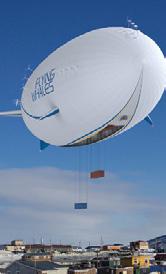




The Nelson River is aptly described as an estuary, but Manitoba does not need an estuary to create a new port. Searching for modern nautical opportunities, we should look at how the rest of the world moves bulk commodities safely, efficiently, and strategically.
When looking at the undersea topography of western Hudson Bay, river estuaries are irrelevant. Yes, I said it correctly: irrelevant.
The Nelson River shoreline is largely made of clay and gravel, the angle of incline dictating how or if modern shipping can be incorporated in that area. Today’s larger ships, often staffed by the large V-ship Company which manages much of the commodity movement vessels of the world, are typically drafting from 40 to 60 feet. To move LNG or crude oil through this port would mean that a pipeline would need to be buried for about two nautical miles out on the low tide foreshore flats (exposed seabed at low tide), then buried under the clay and gravel or laid in a trough of the ocean bottom to a point of about five nautical miles offshore. There, an anchored floating access point or man-made island would provide a single point fueling station to the anchored vessel to be laden. The gravels and clays are easily moved with pumps to create a deeper port area or sea walls for protection from storms and ice.
sistency of a slushy soda drink. Like the sugars in the drink, ocean salts prevent the liquid water from freezing completely. It is the same for “sea ice”. The salts and minerals in sea water prevent hard ice from forming in the first year.
Hudson Bay accumulates on average three to five feet of congealed snowpack. Of course, wind and tide cause the “ice” to move and pile up into ridges. Ridges and open water leads are normal in all the seasonal ice in the Arctic Ocean and including Hudson Bay. Glacier ice is accumulated land snow, compressed, and is part of a stream of ice which gravity forces to sea level where it breaks and falls into the ocean.
This ice is found in the Hudson Straight – much more significant in thickness, made from compressed snow. It’s limited in scope, especially with modern navigation equipment. This type of ice moves slowly and can be tracked by satellite and on the water with radar.
SPONSORS TODATE: Hostedbythe Ph.2046774155•www.NTsymposium.ca



Another important item to note is a counterclockwise current inside Hudson Bay. Saltwater moves from the north pushing the Nelson River current towards the south. The Hudson Bay is a saltwater body with a stream of salt water funneled into it from its northern straight, Aukkarnirjuaq, which is bordered by Baffin Island to the North and the mainland of Nunavut on the south side. This mitigates the presence of fresh water flowing into the estuary. Churchill, on the other hand, has no current moving freshwater out of the harbour, which means that the water in the port freezes. That makes the Port of Churchill limited in its season.
In salt water, sea ice is not an accurate term to describe what floats on Arctic waters. What we commonly call ice is actually congealed snow. Referred to as “pack ice”, it’s there because of the winter snowpack. During the cold weather months, the snow which falls into the ocean water takes on the con-
An LNG, or oil egress system, would be in theory supported by one ice-reinforced tugboat based at the offshore fueling point on Western Hudson Bay. An insurance certificate guaranteed by the Western provinces would be needed until Lloyd’s of London would consider brokering an insurance agreement. Russia operates their export systems even further north and run the operation year-round.
A year-round operation of double hull tankers can easily keep a channel open for 12 months of shipping.
A Nunavik mining company shipping in the region of Hudson Straight presently ships 12 months a year, 1,100 north km from the proposed western Hudson Bay port.
Importantly, the shipping route could take western Canadian select and LNG on tidal water to anywhere in the world. In addition, LNG can be compressed with 25% less energy in a northern environment at Hudson Bay.
A west Hudson Route would be a similar distance as a Port of Montreal to Western Europe and would avoid the cost and maintenance of pipeline shipping overland across half a continent.
Wally Daudrich is the owner of Lazy Bear Lodge in Churchill. He is a certified ship captain and has explored the Port Nelson area from the air and from the sea.
14 lifestyles55.net June 2024 CHALLENGES&OPPORTUNITIES AIRSHIPS•HWY6•RAIL•AIR•DRONES•EVs•WINTERROADS
Thompson,MB•Sept.5-6,2024 ThefirstTransportationSymposiumheldinnorthernManitoba willbringtogetherstakeholdersandexpertstodiscusshow differentmodescanlearnfromeachotherandcollaborateon improvementsandinnovations.Thegoalwillbetoconnect Northernerstoeachotherandthesouthforpassengerand freightservicesinaclimatechangeenvironment.Wewelcome youtoparticipateintheNorth’sexcitingfuturebyhearingof and/orinvestingintheopportunitiestobepresented. EVENTREGISTRATIONatwww.NTsymposium.ca EARLYBIRDrate untilJuly1,2024
Wally Daudrich
Phase 1: • Right of way development from Gillam to tidewater at the mouth of the Nelson River. • Assemble land for port operations • Near term objective to achieve Potash & LNG exports. Phase 2: • Assemble the corridor from FT mac to Gillam • Objective: rail & pipeline • Large scale LNG facility at Port Nelson Subject to community, environmental, engineering and economic feasibility NeeStaNan Development Plan

NeeStaNa N : all of Us
Manitoba’s Gateway to the world
u NeeStaNan is all about vision!
Continued from page 1
doctorates and researchers, and a corporate banking executive are on the visionary road to build a railway corridor from Ft. McMurray, Alta. to Prince Albert, Sask. to The Pas, Man. to the Port of Churchill, Man.
What is the NeeStaNan Corridor Project all about? It’s all about the economics of world markets as it relates to the significant importance of getting the products to end users such as Brazil, Germany, and other European countries. But we have a problem/challenge. And the challenge relates to transportation. Agricultural products such as grain and other important commodities such as LNG and potash, are needed desperately in the European economy today. But the existing railway system in northern Manitoba, as it stands today, does not have the full capacity to meet the demand and supply of getting these products into the international markets.
How do we fix this situation? First of all, we must clearly communicate the NeeStaNan vision and message to those communities that will be impacted by the building of this railway corridor This includes communities such as the First Nations and Métis in Alberta, Saskatchewan and northern Manitoba and a small number of Inuit settlements. NeeStaNan recognizes the importance of providing clear communication and vision to these communities because they have a full right to know and that right needs to be fully respected. Indigenous Canada has seen too many “let’s make a deal” only to later discover there was no real deal in the making.
Where do we start? We have begun right here in our own backyard of Manitoba. We also particularly want to talk with the town of Churchill. Why the town of Churchill? Because there seems to be a misunderstanding of how NeeStaNan fits into the existing railway system.
NeeStaNan is totally on side with the current railway that provides goods and services to the community of Churchill and to local Indigenous communities. NeeStaNan wants to be a genuine compliment to the transportation railway
system that has been there since time immemorial. We believe we must begin with a “meeting of the minds”. NeeStaNan also believes in the importance of the “duty to consult”. We are on that road today.
NeeStaNan’s Board of Directors are majority First Nations and Métis, including the CEO. The founding Proponent is non-Indigenous who began the journey 6.5 years ago along with other Indigenous and non-Indigenous leaders and business minded people. Included in that complement are engineers, architects, environmental staff, and experienced professionals that understand and support the vision of NeeStaNan.
The NeeStaNan corporation is presently located in Calgary, but in the very near future the NeeStaNan head office will be located in Winnipeg. In the Treaty Five territory in northern Manitoba the two key host communities of the NeeStaNan Project are the Fox Lake Cree Nation and the York Factory Cree Nation. Without these two communities NeeStaNan would not proceed forward.
What are the next steps to move forward? There are a few major steps that need to be undertaken in order to proceed forward with 100% due diligence. What are those steps? Communication, feasibility, cooperation, and commitment. Communication with the entities that we believe need to be involved such as the town of Churchill and other Indigenous communities that could be potentially impacted in Alberta, Saskatchewan, and Manitoba. Renewed commitment and co-operation from the new provincial government of Manitoba and continued cooperation and commitment from Alberta and Saskatchewan to further the discussions about the importance of the NeeStaNan Project. We agree that there needs to be a comprehensive feasibility study on the NeeStaNan Corridor Project and to accomplish this, we have asked the provinces to assist financially with this important next step.
Finally, what are the benefits to our local economies in the western region? It doesn’t take a rocket scientist to figure that out. It’s all about growing our
economies in Alberta, Saskatchewan, and Manitoba and all of Canada for that matter. It’s all about jobs and economic spin-offs and putting Canada on the international map once again and showing why Canada is a valuable and honourable partner that is good to do business with. It will demonstrate why Canada is a true leader when it comes to taking up
Key facts
the challenge and torch in the international and global economy. My challenge to you is let’s collectively take up this exciting 21st century economic opportunity and challenge. We can do it and make it a “win-win” for All of Us. Marshall Murdock is a member of Fisher River Cree Nation and is on the NeeStaNan Board of Directors.
“Indigenous entrepreneurs must be integrated into Canada’s supply chains, which are an integral part of the national economy. “
– Rt. Hon. Paul Martin, August 2020
• Hudson Bay to Germany is 4,000+ kilometers closer than Texas.
• Canada is the largest producer and Brazil is the largest importer of potash. Through Hudson Bay, Brazil is 5,000+ kilometers closer than through Vancouver.
• Americans made $200 billion in 30 months reselling Canadian natural gas to Europe!
• Russia is the biggest supplier of natural gas to Europe, but LNG could replace coal in Europe and in the far east reducing greenhouse gases by coal burning countries by 40%.
• Hydroelectric power is clean. LNG and Hydrogen can be exported “cleanly”.
• With the hydroelectricity, cooler temperatures and shorter routes, Canadian LNG would be the cheapest and most efficiently produced LNG in the world.
• Waiting times in ports such as Vancouver can be $20,000+ per day.
• Reduce canal fees and lock charges. The Panama Canal charges can be more than $500,000+ per pass (up to $4 million).




June 2024 lifestyles55.net 15
You can... Subscribe to Canada’s Local Gardener magazine Explore our webstore and check out our other gardening offerings Post information on your upcoming gardening event Sign up for 10 Neat Things Find out the latest on gardening Enjoy past content and more! Plus - connect with us on social media and find out what we’re up to! Facebook: @CanadasLocalGardener Instagram: @local_gardener X: @CanadaGardener Have you visited us lately at www.localgardener.net Copyright (c) 2023 Monkey Business Images/Shutterstock. planning pays office@ pallisterfinancial.com • www.pallisterfinancial.com • (204) 857-4749
Feeling the pain
In this day and age, it isn’t a big secret – animals feel pain! From our companion animals to a recent study showing that even invertebrates such as octopuses display signs of pain, the ability to feel pain seems to have developed, not only very early on in evolution, but also in multiple ways. It is an evolutionary advantage to stay off of that broken leg, or to eat on the opposite side of that painful tooth. While it may seem obvious to say it out loud, actually identifying pain in our companions can be a little more difficult. When discussing pain, we typically differentiate two types. The first is acute pain and it is by far the easiest type to identify – people describe acute pain as sharp, throbbing or burning. In our animals, we will often hear yelping/crying, groaning or even growling or biting due to misplaced aggression. A broken bone, a bite wound or post-operative pain are easy examples of acute pain. Pain medication is called for in all of these conditions to help our animals get through the acute period.

know that when pain becomes chronic, the nervous system adapts to feel even MORE pain in a process called sensitization. This also means that the longer it goes on, the more difficult it is to get ahead of it. It is this chronic pain that is the most difficult to both identify and assess in animals. It is slow to develop, and of course, they can’t tell us they are hurting. We will often hear that our animals hide their pain, especially our feline friends. Signs that are suggestive of chronic pain are subtle – they include decreased activity, lower appetite, lack of grooming. But of course, none of these are specific to chronic pain. The same is true of signs that be noted in a clinic environment, such as elevated heart rate, blood pressure or elevated temperature.
In a general practice setting, there are two specific types of chronic pain that we see every day and aren’t always identified in the home environment
to eat and drink and go about their daily business. But a limp is a compensatory mechanism for some sort of discomfort. A limp = pain. Period.
2) Dental pain. Again, ask anyone who has had any dental work and they will tell you just how horrible it is. But we allow our animals to develop horrendous dental disease, complete with gingiva that is so inflamed it is recessing and teeth that are so rotten then are literally falling out on their own. And yes, even in these cases, they will continue to eat and drink. Such is the instinct to survive. That doesn’t mean it isn’t painful.
Tackling pain is a team effort between you, the owner keeping a close eye on your companions, and your veterinary team. That might mean going in to consult with your veterinary team more than once a year, and it might mean seeing more than one veterinarian. Such is the nature of aging. But there are a myriad of options – from classic to holistic – to help tackle pain in our friends, and even options such as rehabilitation, massage and chiropractic. So many ways we can help ease their pain.
As acute pain fades and improves, some injuries or conditions lead to our second type, which is chronic pain – and this is where things more complex. Research into pain and analgesia is an intensive area. We
1) Osteoarthritis. Osteoarthritis is more than just an animal “aging”, and slowing down. It’s painful! Any human will tell you so. So why do we allow our animals to suffer? That limp you noticed? The slowness you see when your pal tries to get up or tackle stairs? That’s PAIN. Yes. An animal will often continue
And don’t we owe it to them to help ease their pain?
Until next time fellow paw-print loving friends
Silver Heights Veterinary Hospital is proud to serve the Winnipeg region, and is located on Ness Avenue in St. James. Contact them at 204-504-5600 or visit their website at silverheightsvethospital.ca
Champions of child health and #ReconciliACTION
At Children’s Hospital Foundation of Manitoba, we take our role as champions of child health to heart. We recognize the role and importance of reconciliation in the work we do, and it’s with that in mind that we asked a very special 15-year-old to represent all of Manitoba as Champion Child for 2024.
Janessa Dumas Colomb is the first Manitoba Champion from a remote northern First Nation. Every six weeks she travels around 800 km from her home community of Pukatawagan to Winnipeg to see her team of kidney care specialists at HSC Children’s Hospital, plus as Champion she’s attending events and speaking engagements to inspire support for kids just like her.
achievements and stories of First Nations, Inuit, and Métis peoples – like Janessa.
Janessa is one of many Indigenous kids who rely on HSC Children’s. At any given time, up to 60% of the kids at the hospital are from First Nations, Inuit, and Métis communities. Many are away from their families and cultural support. That’s why the Indigenous Community healing Space, being planned through community consultation and with guidance from First Nations, Métis, and Inuit leaders, is so important.

Janessa’s journey with Manitoba’s only children’s hospital started when she was very young. At age five, she was experiencing recurrent urinary tract infections, and doctors at HSC Children’s told her family that Janessa’s kidneys weren’t functioning properly; one was small, and the other was diseased. By age seven, Janessa had reached Stage 4 kidney disease with 25 percent kidney function that continued to decline.
Recognizing the need to be closer to the specialized pediatric care at HSC Children’s, Janessa’s parents moved her entire family to Winnipeg. After support from pediatric nephrology specialists at Children’s Hospital and a successful kidney transplant, Janessa is doing well and back home with family and friends. She is happy to be doing all the things she loves, like fishing, snowmobiling and fancy shawl dancing. In June we celebrate Indigenous History month. It’s a time to honour the unique experiences, cultures,
Elders, Knowledge Keepers, other Indigenous community members and leaders in our medical community have held meaningful meetings to build a framework for the development of the Indigenous Healing Space. This initiative will provide families with a safe space for healing and its design will offer a place where children and families can feel safe, connect with each other, and nurture their whole self –physical, mental, emotional, and spiritual.
The Foundation has also launched another important piece of reconciliation actions emphasizing community engagement and culturally sensitive care. Children’s Hospital Foundation’s brand graphic elements now includes Indigenous-created elements representative of First Nations, Métis, and Inuit cultures like beading style florals (buttercup, wild rose, fireweed blossom, arctic cotton), traditional medicines (sage, tobacco, cedar and sweetgrass) and other graphic elements such as winding vines with mouse tracks and seeds.
We worked with a wonderful Indigenous graphic artist, Leticia Spence, and through guidance of the Indigenous Advisory Circle to the Foundation to de-

velop meaningful graphics that fit the light, fun and supportive tone for all kids who need care at Children’s Hospital.
At the Foundation we aim to weave #ReconciliACTION into all that we do, acknowledging the harms of the past and promising to honour the children of yesterday, today, and tomorrow, as we walk together with First Nations, Métis and Inuit on a path of reconciliation and healing.
To learn more about reconciliation in child health visit goodbear.ca/reconciliACTION.
Stefano Grande is the president and CEO of Children’s Hospital Foundation of Manitoba.
u Stocks high, middle class die – The disconnect between wealthy and “the rest” widens in canada
Continued from page 7
doubly shameful that we place such massive taxes upon it. Removing energy taxes would greatly reduce inflation and financial burdens on the poor, much greater than any tax cut or government hand out ever could, because energy prices impact the prices of almost everything else–from anything made of plastic to anything that is physically transported from one place to another. Yes, fossil fuels are polluting, but they’re better than wood or dung (which is what most of the poor in the world use as a primary source of energy). The real answer is: nuclear power. Wind and solar just aren’t economic in terms of cost and effectiveness. Unfortunately, Canada lacks the will and capital to build nuclear power infrastructure, so fossils fuels it is and it must be for now.
To help reduce and maybe even re-

verse housing inflation Canada has to massively cut immigration… we’ve let in too many people as it is over the past few years. One has to wonder what in God’s name these people were thinking letting in a million people a year into a country with only 40 million people, that is a massive influx any way you look at it. Many Canadians and the immigrants that came here are now suffering mightily because of bad immigration policies. The most significant area of change, and not the last, is that Canada must reduce its spending and ballooning debt. This all impacts the value of the dollar and drives inflation higher. The saddest part of it all is that the current government is completely out of step with the Bank of Canada, what they refer to as fiscal (government) and monetary (BoC)
policies, respectively. When the BoC tightens up the money supply by increasing rates, the government just continues to spend, spend, spend. But, then why has inflation slowed when the government is still spending, you ask? Well, I believe that we are in a real recession, it’s just being masked by unprecedented government spending, creating more government jobs and corporate cronyism. When that eventually stops, Canadians will likely be in even greater financial peril.
I should try to end this on a hopeful note, and so I’ll say that there are parts of the world that are doing well… and perhaps an interconnected global economy that needs a lot of what Canada primarily supplies, fossil fuels and minerals, might be enough to pull us out of the worst of
what I fear to come, so there’s that. As a great economist I love to follow, but who shall remain nameless, often says, “we shall see.”
Romel Dhalla, is President of Dhalla Advisory Corp., provides strategic corporate finance advice to companies and high net worth individuals and was a portfolio manager and investment advisor with two major Canadian banks for 17 years. Contact him at romel@dacorp.ca. Any views or opinions represented in this article are personal and belong solely to the author and do not represent those of people, institutions or organizations that the owner may or may not be associated with in professional or personal capacity, unless explicitly stated. Any views or opinions are not intended to malign any religion, ethnic group, club, organization, company, or individual.
16 lifestyles55.net June 2024
Healthy Pet
Stefano Grande Healthy Living
Janessa Dumas Colomb is the first Manitoba Champion from a remote northern First Nation.
life lease living has Many advantages
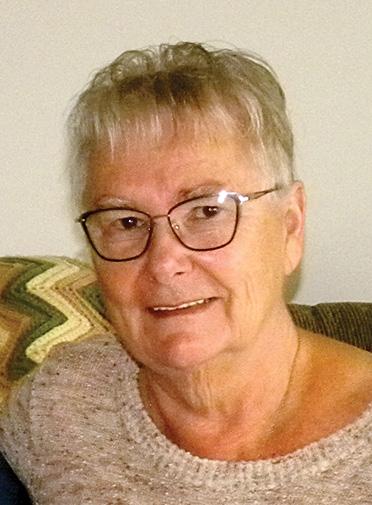
When the 'chicks have fledged' and your house develops echoes, the yard work is just not fun anymore, or the winter snows are coming early and staying too long, many Manitobans are faced with the dilemma – "Where do we go from here?"
Going south for twelve months a year isn't a viable option for most. Fortunately, there are quite a few life lease buildings in Manitoba and they have been the answer to this quandary for many people.
The Manitoba Life Lease Occupants Association (MLLOA) conducted an informal survey of its member buildings to get an idea of why people chose to downsize and why they decided on a life lease over a condominium or a regular rental property.
Lori Blande Life Lease news
The number one reason given by people who chose to downsize was that the housekeeping and/or yard maintenance was too much work. Stairs were another issue for many respondents. For others, the death of a spouse was also a factor in moving out of their home.
As I explained in my first article, a life lease is just thata lease for your life. These apartments are not condominiums and they are not ordinary rental properties. While some life lease buildings are 'market value', the majority operate as non-profit corporations. Tenants are required to pay an entrance fee (refundable) and a monthly rental fee which covers the operating and capital expenses. The entrance fee is secure and protected by law, so you will get it back when you leave.
Entrance fees vary from project to project, depending on the age of the building, size and amenities offered. To my knowledge, fees can range from as low as (or lower) $15,000 to over $180,000 on newer builds; others can be anywhere in between. The same goes for monthly rent prices, a wide price range depending on suite size, amenities, age of the building and maybe even the location.
Many people mentioned the huge investment of buying a condominium and the added monthly condo fees
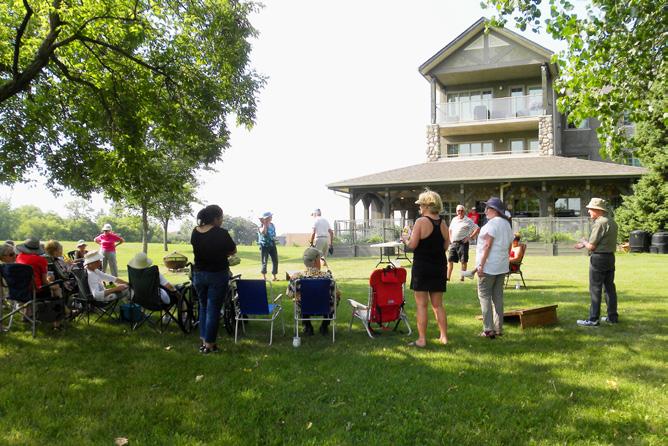
as a deterrent to purchasing one. A few cited the hassle and politics of an in-house condominium board. Monthly condo fees can range from less than $300 to more than $1400 depending on the building. In addition, as owners, they are responsible for the day-to-day management and decisions regarding major projects should there be issues with the building. Furthermore, market variability is a risk for condominiums that doesn't affect life leases, unless it is a market value life lease. (More on this topic in a later article).
Madeleine and Ray L. recently sold their condo of 12 years and moved into a life lease on Ferry Road. They are ecstatic about the 'no responsibility, worry-free living'. Madeleine is delighted that they no longer have to concern themselves about appliances breaking down, plumbing or electrical issues or washing exterior windows. Laughing, she said, "They even change the furnace filter for us."
Often, the monthly rental fees for life leases, with all their added features and amenities are lower than regular rental properties. "I tried to find rentals with comparable amenities and suite size to my life lease and I found that I would be paying more for a much smaller apartment with less amenities and no social activities or sense of community" reported Ann B.
When asked why they chose life lease living over a regular rental, the majority of respondents indicated the sense of community and social activities offered in life leases as a big factor. Suite size and location of the building were also high on the list of reasons for their choice. Amenities such as in-suite laundry, underground parking and the fact that most life leases are restricted to a 55+

population were also a priority.
The survey also asked respondents if they thought they fully understood what a life lease was before committing to one. A number of people, including Dave Kennedy from Glendale Courts, said "definitely not" or "not really". Many residents confess they still don't fully understand the nuances of life leases or the legalities and rules involved. Government officials, insurance companies and some property management companies struggle with the life lease concept and related legislation and regulations.
Education is one of the tenets of the MLLOA and we are working to do just that. The Association holds 'round tables' / information sessions for residents of member buildings on topics related to life lease living. We can do live streaming of events and recordings so members can watch them at a more convenient. Also, the MLLOA has been working collaboratively with the Manitoba Government to have the Life Lease Act changed to be more consumer friendly.
Stay tuned for future articles which we hope will help you better understand the legislation and related regulations. Look for me again in September; I’ll explain what the MLLOA is all about.
If you are interested in the life lease option, feel free to contact us at the Manitoba Life Lease Occupants Association (MLLOA). We are a non-profit organization that represents more than thirty – five life lease member complexes in Manitoba. We also provide education, and monitor legislation, governance and resources. For more information, visit our website at www.mlloa.ca Lori Blande - Member at Large, MLLOA and resident of a Winnipeg life lease.
Sri Lankan New Year ceremony: Opened to Canadian community
Dr. Dilantha Fernando, Dean of St. Paul's College, at the University of Manitoba, and Past President of the Sri Lankan Association of Manitoba came up with a thoughtful idea to celebrate Sri Lankan New Year on April 14, 2024, at St. Paul's College. More than 100 of the multinational and multicultural communities participated. I am confident this is the first time the Sri Lankan community conducted this type of new year celebration.
Sri Lankan men wore traditional sarongs and the ladies wore sarees in blue as is traditional at New Year. The Head Chaplain of Christ the King Chapel Fr. Mark Filips was also wearing a white shirt similar to the Sri Lankan national dress. He told me that it was a gift from a Sri Lankan, and he decided to wear it to grace this grand occasion.
auspicious event. For dessert, there were fruits, a variety of Sri Lankan oil cakes and watalappan.

Just after lunch the audience was in for a real surprise when Sri Lankan Dream Start made an appearance with none other than Suneera Sumanga, who is now world renowned for his Amaradeva style signing. Three Sri Lankan new-generation singers conducted a grand show in Winnipeg on March 30, 2024. Suneera was one of them. As a Catholic, he sang hymns with the choir. Suneera was trained as a singer in his school days at De Mazenod College and in his church choir in Sri Lanka. In 2017, he won first place in the national singing competition and became the Derana Dream Star. Suneera sang Sinhala and Hindi songs and got the audience to participate in his last song.

about his village development in Kanatoluwa in the late 1950s. I was encouraged to attend, as a gift of labor (Shramadana), for the rural poor. My father arranged for me to attend his Maths class at his home in Maradana, Colombo.
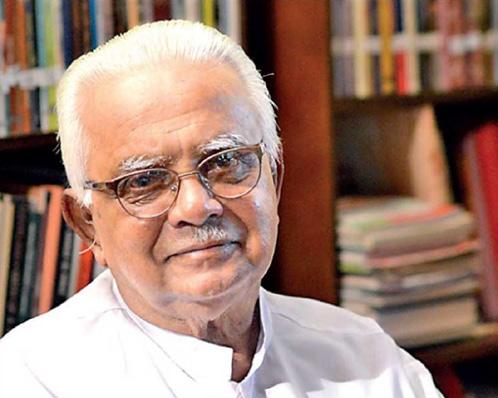
Before starting the mass at the chapel, the brass oil lamp was lit by the distinguished invitees. Tharu Fernando and Sheena Oguri highlighted the significance of the new year in South Asia, particularly in Sri Lanka and India. They explained the historical background and pointed out that Sri Lanka has a history of more than 3,000 years. Choir hymns too were sung beautifully in Sinhala, Malayalm and English.
Mass was followed by a well-planned Sri Lankan potluck lunch. Delicious options included milk-rice to make it an
All in all, it was a great Sri Lankan New Year celebration on the 14th of April. A first in Winnipeg. I am sure many will have lovely memories of this for a long time to come.
A tribute to Dr. A.T. Ariyaratne: Gandhi of Sri Lanka
On Nov. 5, 1931, Dr. Ariyaratne was born in Unawatuna, where my wife Chandani’s ancestral home is located. He was my teacher (guru) in my school, Nalanda Vidyalaya (College), Colombo. When my father visited my school to monitor my studies, he became friends with Dr. Ariyaratne, who told my father
Dr. Ariyaratne started the Sarvodaya movement with 40 school students and 12 teachers from Nalanda College. The book named "Revolution Under the Breadfruit Tree" described the early days of this movement. The author explained that Dr. Ariyaratne was forced to marry because, if he stayed unmarried, working with young girls and boys could send a bad signal to the world.
Before getting married to me, Chandani was teaching at Sumanajothi Vidyalaya, the school located in Unawatuna. Chulalatha was a staff member in this school and Dr. Ariyaratne's elder sister. After we got married both of us had contacts with
Chulalatha and we discussed my school experiences about her younger brother. During my tenure in Mahaweli Authority of Sri Lanka I managed to obtain Sarvodaya services to enhance the capacity of Farmer Organizations in Mahaweli areas. In 2018, when we visited Sri Lanka, Chandani and I paid a visit to Neetha Akka, Dr. Ariyarathn's wife, and my Guru Ariyaratne. We had a long conversation about Sarvodaya and both our day-today our family matters. A few weeks ago, when I spoke to Dr. Ariyarathn's son, Vinya. I inquired about his father's condition. Vinya told me that his father was very weak. He passed away on April 16, 2024.
My dear Sir, under Conventional Truth (Sammuthi Sacca) you were honoured and recognized by national and international organizations and individuals. However, based on Ultimate Truth (Paramattha Sacca) your humble humanitarian service more than six-decades is quite enough for you to shorten the long walk in Samsara.

June 2024 lifestyles55.net 17
Senaka Samarasinghe
The late Dr. A.T. Ariyaratne.
Sri Lankan New Year.
One of the many benefits of a life lease is the social interaction with residents just like you.

bill loewen’s legacy of love for classical music lives on with the Shirley loewen Sunday classics
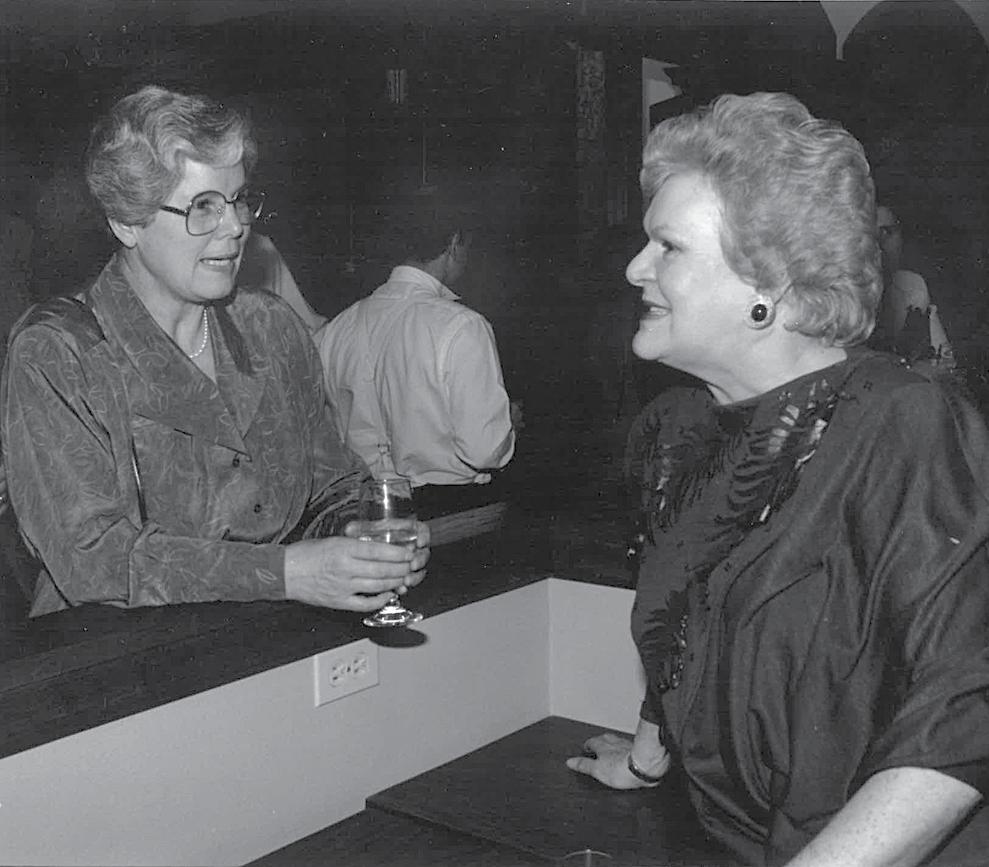
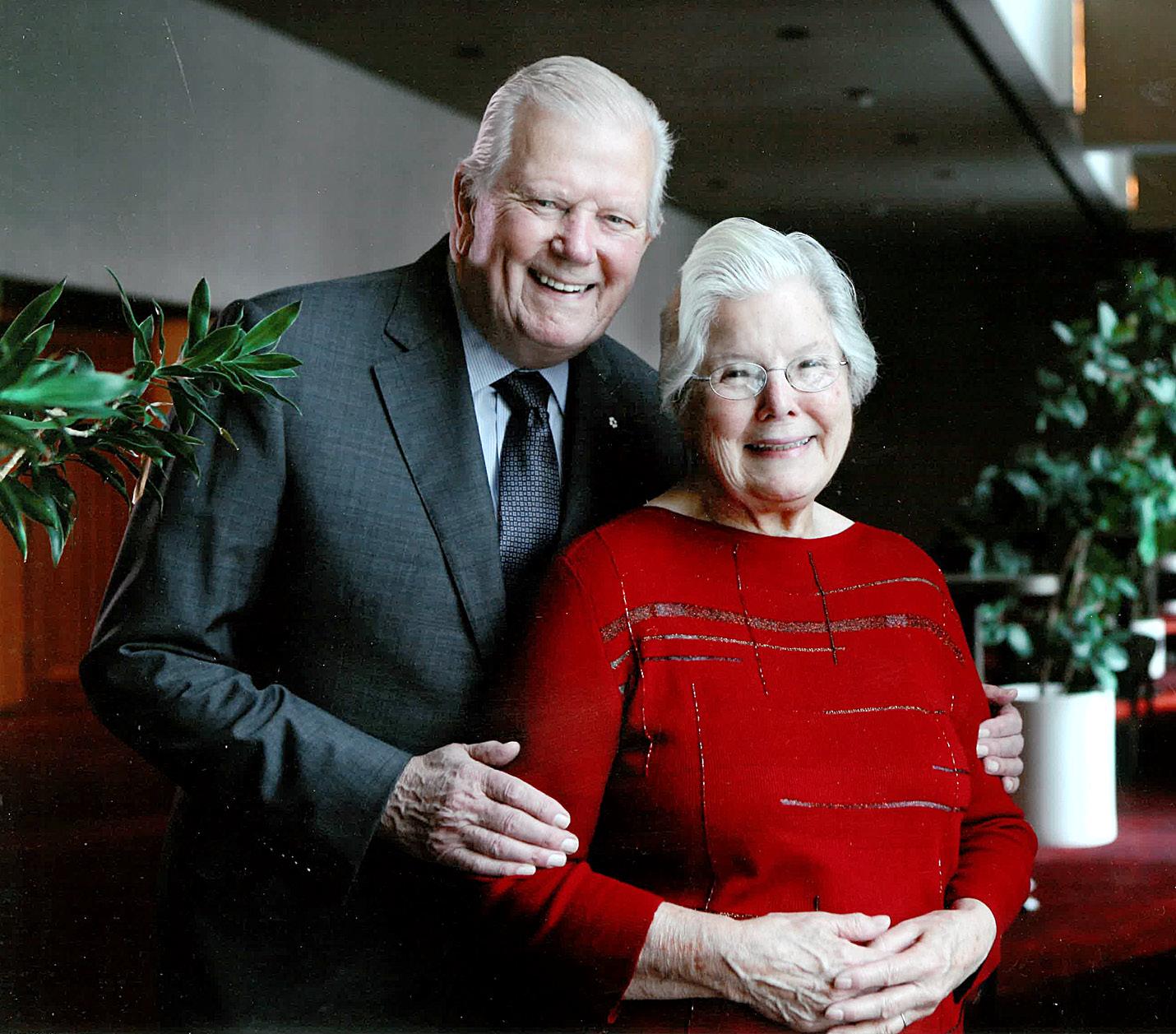 Katie
Katie
Yablecki,
interim Director of Development, Winnipeg Symphony orchestra
At 93, Bill Loewen may be retired from his position as the founder and head of TelPay, but he certainly hasn’t retired his passion for classical music and the Winnipeg arts community. This was a love that he shared with Shirley, his wife of 66 years. They eventually passed this love on to their five children, Howard, Ann, Louise, Peter, and Jennifer, as well as their grandchildren and great-grandchildren. And this love has led Bill and his children to honour the memory of Shirley, who passed away in 2022, by funding the creation of the Shirley Loewen Sunday Classics concert series with the Winnipeg Symphony Orchestra. This matinée series will appeal to those who cannot attend the regular Classics performances in the evening. It is something that Bill hopes will bring families together at the WSO at a more convenient time of day for many.
Unlike his offspring, Bill did not develop his taste for classical music through the influence of a family member. Like so many things in his life, Bill had to work and find his own way to this passion. “As a very young child, I would wait every night for 11 o’clock to come to hear the classical music broadcast [on the radio] from Chicago –'Music ‘til Dawn’ it was called – and I’d sit in this chair, and I might eventually go to sleep in this chair, and my mother would find me and scold me, but there was always that music that drove me to do what I did and so that was sort of the beginning.”
Growing up in the small farming village of Elkhorn, Manitoba, in a family of nine, access to classical music and the arts was not easy. But Bill held on to this interest as he grew up and entered the working world, eventually meeting his future wife, Shirley, a nursing student at the time, after being transferred to Regina as a young chartered accountant.
Bill and Shirley left Saskatchewan to start new

jobs and a family in Edmonton It was there that they had their first opportunity to attend a live symphony performance, as the firm Bill worked for would often get complimentary tickets.
In 1965, the Loewen family moved to Winnipeg, where they would remain, and Bill would found his computerized payroll company Comcheq and later TelPay. Bill and Shirley began to attend performances of the WSO and made lifelong relationships there with some of the other patrons. Despite how incredibly busy they were with Bill’s business, their family life and the different causes Shirley took up on her own, “The WSO was their date night!” daughter Ann explains.
During a difficult period for the WSO in the 1980s, Bill was tapped by then WSO vice-president and later chair herself, Dorothy Dobbie, to join the Fundraising Committee. This led to a seat on the Board of Directors, where he would later serve as the chair for several terms. It would be fair to say that the WSO survived those dark time thanks to Bill Loewen. When the WSO was in trouble, Bill was there to help guide it back to where it needed to be. When the WSO was hurting financially, Bill opened his wallet to make sure that the WSO did not have to close its doors. His companies sponsored the WSO, and he personally did what it took to nurse the WSO back to health.
Bill’s daughter Ann describes her mother as finding her own love for classical music and the WSO through her relationship with Bill. Following Bill’s lead, Shirley eventually went from being an audience member to being incredibly involved with what was then known as the Women’s Committee. Ann describes Shirley noticing that “something needs to be done here and no one else is doing it, so I’m going to step up,” which was a motto that both Bill and Shirley seemed to live by and made them such wonderful life partners. Ann believes that both of her parents felt that it wasn’t enough to simply attend the WSO concerts, “They had to make sure that it was a viable entity, that was important to them.”
Ann describes her family’s relationship to the WSO as something “we’ve all come to through our parents and in our own ways, and even though
none of us, except for one, are musicians, I know for all of my family that music is vitally important to our well-being and our sense of what is important in the world […] and now that we are out of the pandemic especially, I see it, how important going to concerts is for those human-tohuman connections. You can listen to all of the music in the world, but there is something about experiencing it live, collectively with other people and being able to share and exchange in dialogue about it afterwards.” Another takeaway Ann has from her upbringing in the Loewen household is “Without a symphony, so many things will be lacking in the community—there would be no ballet, no opera, the whole infrastructure of the Concert Hall—so many things are so dependent on this organization. We would lose a lot if we lost the symphony.”
This passion for the WSO goes beyond the children of Bill and Shirley Loewen, as their grandchildren would also frequently attend WSO performances with their grandparents. “I have so many memories of going to the WSO concerts with my Grandma and Grandpa. It was always such a special occasion for me, and the Concert Hall has always seemed like a magical place where amazing musicians and performers get together to transport people to other worlds,” explains granddaughter Hannah. Hannah herself is now a mother and, following in Bill and Shirley’s footsteps, has begun taking her child to the WSO Kids Concerts.
Bill is passionate about maintaining the longevity and health of the WSO and believes that it’s up to the older generation to teach the younger ones about the importance and value of the symphony by bringing them out to live performances. It is incredible to see how music has connected the Loewen family. Their remarkable generosity speaks to the importance of individuals working to sustain not only our cultural institutions, like the WSO, but also the relationships and ties we build with our families and communities. We hope you’ll take a note from Bill Loewen and his family and bring your family to one of the Shirley Loewen Sunday Classics concerts.
18 lifestyles55.net June 2024
Bill and Shirley Loewen: passionate supporters of the WSO.
Shirley Loewen and renowned Canadian singer Maureen Forrester at a WSO concert.
hey baby, they’re playing our song …
forgotten favourites revived
It’s a fate that has happened to many older hits; going from being heard non-stop to falling off the airwaves into historical obscurity.
However not all is lost as these faded hits are being brought back once again, thanks to the hard work of a dedicated group of retired announcers on the internet.
Lifestyles 55 Digital is an internet radio station based here in Winnipeg that is restoring the glory and lustre to not only the forgotten golden No 1s but also the other “almost top hits” that are shiny silver treasures. The station is heard across Canada, United States and the United Kingdom.
Founded in 2023 to appeal to both the baby boomer and gen-Xer’s demographic, Lifestyles 55 Digital is a newcomer that’s once again breathing life into forgotten musical favourites. Alex Regiec, co-founder along with broadcast veterans Jim Ingebrigtsen, Dorothy Dobbie, John Einarson, Chris Tuffer, Chris Golden, Greg Gardiner, Bill Quinn and John Panting, along with Ian Leatt, said that initial response to station’s format in its first six months surprisingly attracted 20,000+ listeners.
“When we began broadcasting, we knew that as the new kid on the block filled with many radio stations that we had to be unique and appeal to the memories of our audience,” Regiec said. “It’s wonderful to hear from a listener who’s excited about rediscovering a song they listened to in their youth. In this age of data-driven programming, you end up hearing new music you don’t recognize over and over. What we’re doing is breaking that mould with the human touch. We’re the station that’s tuned into you!”
Looking through their extensive music collections, veteran DJs such as Chris Tuffer and Chris Golden dig out a lot of songs that haven’t been played on the radio for a long time. On Quest for Silver with Mr. T, Chris Tuffer relives his love of spinning vinyl and playing the “almost number ones” of the 60s & 70s, while on Golden’s Oldies, great musical nuggets are mined from the 60s, 70s & 80s along with artist facts and trivia shared with the audience straight from Chris’ memory!
Another listener favourite is musicologist, renowned author and Order of Manitoba recipient John Einarson. Known as the “Old Professor”, he explores the rock & roll and country-rock genres, the artists and their recordings telling stories and

sharing insights into their influence on music history on four shows … My Generation, Off the Record, Desperados, and Night Moves. Finally, for lovers of Doo-Wop, Jim Ingebrigtsen celebrates the music from the early 1950s to the mid 1960s all for the melancholy minded. On
his other show, Radio Redux, you’ll hear his interviews with some of the icons of the music business.
You can enjoy these memorable hit song comebacks online at www.lifestyles55radio.ca, on Alexa smart speakers or at Live365 at https://live365.com
Can Canada ever become a democracy?
Phil Sheegl is not in prison. This clearly tells us; Canada is not a democracy. We are told all citizens are equal. Obviously, some citizens are more equal than others.
Canada has always been England’s puppet and not an independent democracy. Canadians have been told they are living in a democracy so often; most have come to believe we have a democracy despite all the evidence to the contrary.
Canada has accepted King Charles III as our king and has adopted England’s god as our god. Why? Why can’t we run our own country and give up the idea of monarchs and state religions?
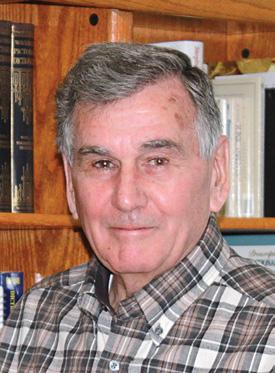
Canada officially states it was England’s god who placed King Charles III onto his throne. Up until 2018 any Canadian questioning this was guilty of blasphemy. This was especially true during the reign of Queen Elizabeth I when children as young as seven years old were hanged for heresy and blasphemy.
religion is used as the basis for laws. In a true democracy citizens think for themselves, deciding how they should run their own country, and, by using common sense, justice, and fairness, they make their own laws and rules. A true democracy has equality for all citizens and has a government of the people, by the people, and for the people. All citizens have total freedom to think for themselves, to voice their opinions, and to live according to their conscience. However, citizens do not have the right to infringe upon any other citizen’s rights.
Weedon Food for Thought
A true democracy does not tell other countries what to do and they do not allow other countries to tell them what to do. Historically, England’s friends and enemies have been Canada’s friends and enemies. However, England has always been fickle. England changes their friends and enemies like I change my socks.
migration of peasants from the Austria-Hungarian Empire to break land and build farms on the prairies. However, when England entered World War I, Canada, being England’s puppet state, was automatically pulled into the war and these Canadian peasants from Eastern Europe were deemed to be enemy aliens. Thousands of men, women, and children were arrested and imprisoned in concentration camps throughout Canada. Women had babies in these camps, many peasants died, and some were shot when they tried to escape. These immigrant Canadians had no rights. This atrocity was repeated during World War II when Japanese Canadians were arrested and put on forced labour farms. Japanese Canadians also lost their rights and freedoms. Would these evils have happened if Canada was a true democracy?
The Canadian Charter of Rights and Freedoms begins by affirming, “Canada is founded upon principles that recognize the supremacy of God”. Because “God” begins with a capital letter, it is implied that this is the one and only true god, which is the English monarch’s god. This is evidence that, despite Canadians having elections, Canada is a pseudo-democracy.
Most Canadians do not recognize England’s god. Many Canadians worship a different god or gods, and many Canadians view all religions as being false, believing there are no gods. To be a true democracy, religion and government must be separate. Religion must be a personal matter, neither condemned nor condoned by the state.
A true democracy has no official religion, and no
In 1939, when England declared war on Germany, Canada, being part of the British Empire, was also at war with Germany. This meant Russia, as Germany’s ally, became Canada’s enemy. This resulted in Canada arresting Jacob Penner, a Canadian living in Winnipeg, who was considered pro-Russia because he was an admitted communist and atheist. Penner, along with other Canadians, was arrested and held in prison for more than two years without any formal charges being laid. However, with the double agent and spy fiasco which caused Russia to change sides, Russia became England’s ally and friend. Canada, to save face, quietly released Jacob Penner without explanation. This is an example of how Canada, being England’s puppet, flip-flops and jumps around with no thought, just trying to please their master.
Expanding to the west, Canada welcomed the im-
A true democracy has a constitution which is strong enough to limit the powers of elected politicians. Canada does not have such a constitution which would keep zealous apparatchiks on a tight leash and prevent them from pulling us into trade embargos, trade wars, and military conflicts. A true democracy has no enemies, only friends. Through trade, a country prospers, and a true democracy will trade with all countries. A true democracy does not have the arrogance to dictate to other countries, to criticize their choice of government. A true democracy addresses internal matters which they have control over and allows other countries to do the same.
Next month: Our English Heritage
Wayne Douglas Weedon is a Manitoba author who writes a combination of fictional and factual stories, essays, and novels.
Editor: Mr. Weedon’s views are his own and do not reflect any policy of this publication except that Manitoba Lifestyles 55 understand that this a democratic country where free expression is encouraged. If you wish to disagree, we are please to accept opposing views. Our only rule is that your cannot attack individuals or promote hate.

June 2024 lifestyles55.net 19
Wayne
Wanted: mystery solved
In past articles I have written about several different types of Geocaches. In this article I will be writing about Mystery Caches only.
A mystery cache, also called a puzzle cache, is one in which you might need to solve a puzzle to get the final coordinates, bring a special tool along to find the final coordinates, or do something in the field to find the final location of the log book. Most often the container with the log book is not at the posted coordinates. That will be noted in the cache description.
counts. Basic accounts will only have the easier ones.
Solving a mystery cache may take special or advanced skills. You may need to be good at calculus or physics. I am not and these take me a bit longer than average, but I still enjoy them none the less. You may need to do something like a jigsaw puzzle, (known as a Jigidi), yes there are digital jigsaw puzzles.
 Gary Brown Geocaching
Gary Brown Geocaching
The puzzle caches can be ridiculously easy or extremely difficult, usually they are somewhere in between. Puzzles can also be obtainable in both premium accounts as well as with basic ac-
An easy jigsaw can be solved in a very short time such as the one in Geocache GCAHBHZ, can take a long time as in GCA6C2K or can make you wonder what you did to upset the Cache Owner as is the case in GC9JPAQ. Once you solve any of this type you get the coordinates for the physical cache.
There is what is known as field puzzles. The posted coordinates will take you to a spot where you may need to answer questions to get a series of numbers that will fit into the incomplete coordinates that are supplied on the geocache page or the answer may be right in front of you.
Mystery caches are so captivating that there are events dedicated to solving some of the harder ones. Many people show up and work in groups to solve them. The beauty of the events is that you can learn new and creative ways to solve the puzzles. Mystery caches come in all shapes, sizes and configurations. There is one called Ready Player One - GCA0NWB. It was originally located in Brandon but because of maintenance issues it was archived and reincarnated closer to the cache owner’s home town of Dauphin. It has now sat waiting for someone to solve it and claim the coveted FTF since October 8, 2022. I’m sure that this is merely a case of peo-
ple trying and losing their motivation after a while. To try to motivate people I am offering a reward to the first to contact me at brresources@mts.net with proof that they have solved it. A photo of the message that you get from the checker showing that you have correctly solved it will suffice, but please cover up enough of that so that I still need to solve it. When I have time I do like the challenge.
The reward is a year of premium membership at geocaching.com paid for. Only one membership can be claimed and only the first to send in the proof will get it. It is also not necessary to actually find it to claim the prize, so solve it, send in the proof to claim the reward and then grab the FTF.
I’m looking forward to seeing you at a solved Mystery Cache.
Gary Brown is the President of the Manitoba Geocaching Association (MBGA) and can be reached at mbgaexec@outlook.com.
The St. James-Eaton’s hall of fame, Part One
This is part one of a two part piece.
Between July 15, 1905, and October 20, 1999, Eaton’s at 320 Portage Avenue was a meeting place for Winnipeggers. This story will tell the Eaton’s story by listing the contributions of some St. James residents (mostly employees). The streets are listed in alphabetical order.
1. Addison Crescent, Barbara Kiesman 1986-90. Credit office and warehouse.
2. Albany Alexander Edward MacGregor, a clerk. In 1942, Alexander of the RCAF died in World War 2 at the age of 25. Alexander is remembered on the Eaton’s War Memorial.
3. Albany Jack Hallett, 1948-1977, buyer for the catalogue which included travelling to Vancouver and Toronto and being store supervisor.
4. Albany Bernice Hallett, 1960s and 1970s, worked Downtown at the watch and jewelry repair counter.
5. Albany Al Lennox, 38 years at Eaton’s, sold Burton Cummings his first piano.
Ewart, paymaster for western Canada retired in 1978, after 50 years at Eaton’s.
16. Athlone Street, Shelly Gallipeau, 1970s, worked as a student at Polo Park.
17. Baffin Bay, Georgina Baily Burstow, 1963-64, Downtown children’s wear and hat bar.
18. Belvidere, Kathleen Bodley, the 1960s Toyland, and modelled for seventeen shows.
19. Belvidere Street, Norm Bodley, in charge of boys and girls parcel wrapping.
20. Belvidere Street, Mabel Bodley, baby department and children’s wear.
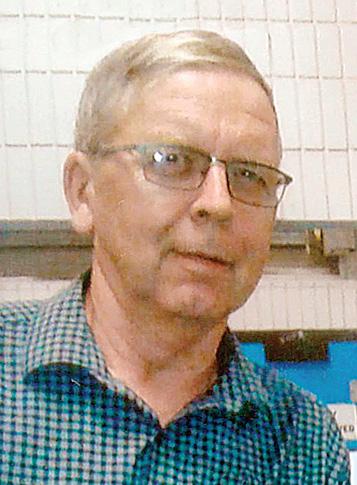
Fred Morris From the desk of a gadfly
6. Amherst Margaret Bineau, 1965-68, Downtown Polo Park mail order, Downtown gift wrapping, cosmetics at Polo Park.
7. Amherst Findlay Cameron, 1920s1960s except for WW2 service, worked in the printing plant and store time office.
8. Armour Crescent, John Mainella over 40 years beginning in the early 1960s, pharmacist and buyer. John held an executive position in the Eaton’s Retirement Club.
9. Assiniboine Crescent, Mary Bowen during World War 1 and later, after raising her children, worked in the woman’s wear Department.
10. Assiniboine Crescent, Victor Black, 40 years optical department.
11. Assiniboine Crescent, Malcolm Donaldson, 1960s department manager.
12. Assiniboine Avenue, John Lamontagne, elevator conductor (source the 1914 Henderson Directory).
13. Assiniboine Avenue, Thomas Cormie, employed by Eaton’s for over 40 years, retiring in 1962.
14 Assiniboine Avenue, John Baxter, retired in 1970 after 40 years at Eaton’s.

15. Assiniboine Avenue, Thomas
21. Belvidere Street, Sid Hall implemented the security systems in Western Canada’s Eaton’s Stores, retired in 1979.
22. Belvidere Street, Robert Brown, 1940s1954, furniture department manager.
23. Belvidere Street, June Brown, late 1930s, mid-1940s, 1960-70 wrapping department children’s wear.
24. Belvidere Street, Lesley Lewis, retired in the early 1960s after more than 25 years of service. Department head worked in department 926 in the basement and second floor linen department. Often took the neighbourhood children to see Eaton’s Christmas toy display.
25. Belvidere Street, George Blakeman, 1950s assistant department manager.
26. Belvidere Street, Thomas Webster, 1940s-1979, manager children’s wear.
27. Belvidere Street, Gord Sparkes, early 1960s, stock room, a member of the 1978 Eaton’s Trophy winning team at the Manitoba Bonspiel.
28. Belvidere Street, Herb Cooper, 1950s-1960s, manager of the drapery department.
29. Belvidere Street, Paddy Porteous, part time in the wrapping department.
30. Belvidere Street, Grant Bodley, part time in men’s wear.
31. Belvidere Street, Bruce Bodley part time Parcel Department.
32. Belvidere Street, Dorothy Webster, part time in ladies’ fashions.
33. Brooklyn Street, Albert Knight, 1931-67, delivery driver. When Albert started at Eaton’s, horses were used for

deliveries.
35 Brooklyn Street, Dave Davies, over 40 years with music, window displays, and furniture refinishing departments.
36. Buchanan Blvd., Tille Bessey, 15 years at Eaton’s Polo in Cosmetics. In 2021, Tillie celebrated her 100th Birthday.
37. Collegiate, Dora Moir 1960s 1970s, furniture stock control.
38 Collegiate (College Street) James Hutchinson, 1911-49, hardware manager.
39 Columbus Crescent, George Whyte, worked for 25 years at Eaton’s Downtown. Merchandise manager for home furnishings.
40. Columbus Crescent, Candice Bell, china department at Polo Park.
41. Danbury Bay, Connie Crawford worked in the Catalogue Building and Downtown Store.
42. Davidson, Darlene Harder 1970s, Eaton’s supervisor.
43 Davidson, Kay Harder, 1960s, a clerk.
45. Deer Lodge Place, George Stokes, 1915-21 and 1930-53, head cashier with a knowledge of exchanging currencies.
46. Deer Lodge Place, Lesley Gamey, 1973-99, stock person, office clerk, assisted supply reps.
47. Deer Lodge Place, Hanaye (Bunny) Nagamori, started in the early 1960s in the jewelry department Downtown before transferring to children’s wear, and toys at Polo Park.
48. Deer Lodge Place, Rosemary
Head, 1970-71, Eaton’s junior council from St. James Collegiate and cosmetic department at Polo Park. Rosemary won an Eaton’s public speaking award.
49. Douglas Park Road, Susan Thompson, 1970s Worked for Eaton’s in Winnipeg and Calgary. Various jobs including signature supervisor, sales, buyer, and department manager. Also, Winnipeg’s Mayor, 1992-98.
50. Douglas Park, Gordon McKinnon, 1970-71, St. James Collegiate junior council representative.
51. Duffield Street, Jane Rush, 1970, catalogue department.
52 Duffield Street, Anne Singbell, 1972-73, Downtown store security department.
53. Duffield Street, Johnny Curle, 43 years (1930s-70s), radios and TV’s.
54. Duffield Street, Howard Curle, late 1960s, the book department.
55. Emerald Grove Drive, Allan Vernon Atwood, 1968 appointed the operating manager of Eaton’s Polo Park. Allan had previously held management positions in Prince Albert and Saskatoon.
56. Ferry Road, Marvel D’Argis, 1961-68, mail order department.
57. Garrioch Street, Terry Sheardown, 1950-75, worked in curtains, blinds, carpets, and interior design, manager fine furniture.
58. Garrioch Street, Vivian Sheardown, worked in the catalogue building in the early 1900s. In 1919 received the Eaton’s Jubilee (1869-1919) book, and a letter of appreciation from John C. Eaton.
59. Garrioch Street, Audrey Sheardown, 1976-98, baby shop and children’s wear at Eaton’s Polo Park.
60. Garrioch Street, Linda Sheardown, 1970-78, Eaton’s Polo Park cosmetics.
61. Garrioch Street, Sherry Sheardown, 1972-74, Polo Park small appliances.
62. Garrioch Street, Wendy Hodgins, (Sherry Sheardown’s twin), 1975 Downtown beauty salon, 1976 Saskatoon, 1997 Polo Park until the 1999 store closing. Men’s and ladies’ fragrances.
63. Glendale Blvd., Ian Moore, 1962-63, parcel pickup Downtown store, dispatch department.
Update on Arlington Bridge It has now been more than 6 months since the closure of the Arlington Street Bridge and still no decision from City Council.
Fred Morris is a Grandfather, Sports Fan and Political Activist.
20 lifestyles55.net June 2024
Cover of the Eaton’s department store Fall and Winter 1905-6 catalogue, which commemorated the opening of their new Eaton’s store in downtown Winnipeg.
raining cats and dogs
Arelative sent me the following examples of how some of the old sayings we use originated. I am sure they have changed somewhat over time but, nonetheless, I found them interesting. Maybe you will, too.
People used to use urine to tan animal skins, so families used to all pee in a pot and then it was taken and sold to the tannery. If you had to do this to survive you were “Piss Poor”.
But worse were the really poor folk who couldn't even afford to buy a pot. They “didn't have a pot to piss in” and were the lowest of the low.
In the 1500s most people got married in June because they took their yearly bath in May, and they still smelled pretty good by June. Still, brides carried a bouquet of flowers to hide the body odor. Hence the custom remains today of carrying a bouquet when getting married.
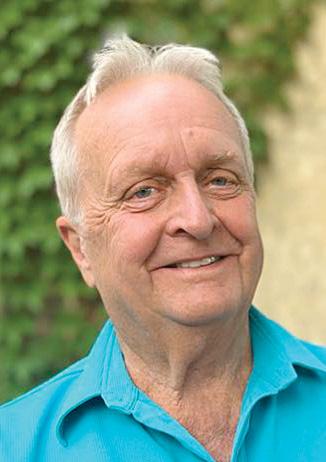
Houses had thatched roofs-thick straw-piled high, with no wood underneath. It was the only place for animals to get warm, so all the cats and other small animals (mice, bugs) lived in the roof. When it rained it became slippery and sometimes the animals would slip and fall off the roof... Hence the saying “It's raining cats and dogs.”
The floor was dirt. Only the wealthy had something other than dirt. They were "dirt poor." The wealthy had slate floors that would get slippery in the winter when wet, so they spread thresh (straw) on floor to help keep their footing. As the winter wore on, they added more thresh until, when you opened the door, it would all start slipping outside. A piece of wood was placed in the entranceway, a “thresh hold”.
Jim Ingebrigtsen
People bathed in a big tub filled with hot water. The man of the house had the privilege of the nice clean water, then the sons and any other men, then the women and finally the children. Last of all the babies. By then the water was so dirty you could actually lose someone in it. Hence the saying, “Don't throw the baby out with the bath water!”
Sometimes if they obtained a cut pork, they felt quite special. When visitors came over, they would hang up their bacon to show off. It was a sign of wealth that a man could, “bring home the bacon.” They would cut off a little to share with guests and would all sit around and “chew the fat”.
Bread was divided according to status. Workers got the burnt bottom of the loaf, the family got the middle, and guests got the top, or the “upper crust”.
Hannah in Toronto
Lead cups were used to drink ale or whisky. The combination would sometimes knock the imbibers out for a couple of days. Someone walking along the road would take them for dead and prepare them for burial. They were laid out on the kitchen table for a couple of days and the family would gather around and eat and drink and wait and see if they would wake up. And there is the origin of the custom of “holding a wake”.
England is old and small, and the local folks started running out of places to bury people. So, they would dig up coffins and would take the bones to a bone-house, and reuse the grave. When reopening these coffins, one out of twenty-five coffins were found to have scratch marks on the inside and they realized they had been burying people alive. So, they would tie a string on the wrist of the corpse, lead it through the coffin and up through the ground and tie it to a bell. Someone would have to sit out in the graveyard all night “the graveyard shift” to listen for the bell; thus, someone could be, “saved by the bell” or was considered a “dead ringer”.
Perhaps you will remember a few of them should you attend a wedding this summer.
Jim was a writer-broadcaster and producer on television and radio for 40 years. He is also a podcast host on Lifestyles 55 Digital Radio. Find Radio Redux, Mid-Century Memories and many others at www.whatsupwinnipeg.ca/lifestyles55digital-radio/
The following story is part a new feature, a fictional work by our columnist Wayne Weedon, Hannah in Toronto. Wayne is a brilliant writer whose style consists of simple declarative statements that stick in your mind as he leads you through an intricate web of circumstances to reach the lesson he set out to teach.
Hannah in Toronto
Note: The contents of this story deals with religion and may offend some people. You may wish to avoid reading it.
Pregnant and deserted by her lover, a young girl moves in with her grandfather. When the baby boy is born, the grandfather agrees to look after him so his granddaughter may go to work. Despite the age difference, the relationship between the boy and his great-grandfather was more like two siblings than that of an adult and child. As this boy grew into a young man, he loved to look back and tell stories about his great-grandfather, whom he always called “Pops”.
“Any person who reads the Bible from cover to cover, if they were not already, they will be an atheist by the time they come to the end of this book.”
When Hannah made this statement, she was not referring to the dozens of abbreviated and watered-down versions of the Bible which may be found in bookstores and theology classes, she was referring to the unabridged authorised edition of the King James Bible which gives two versions of The Creation, several contradictory versions of the life of Jesus, miracles which defy laws of Nature, and mentions Lilith, Adam’s first wife.
Hannah had learned, because of Academic Freedom laws, university professors are allowed to defy certain Canadian laws. They and their students have been allowed to question the veracity of the Bible without having to worry about going to prison for blasphemy. For Hannah, her very first lecture at university was like a breath of fresh air. She had found a place where she could freely voice her beliefs in a safe environment.
Pops told me, it wasn’t a mystery that Hannah was an atheist. She described her mother as a Secular Jew, and her father as a Secular Mennonite. She explained, there is an age-old question, is Judaism a religion or a race, is Mennonite a religion or a race? Hannah explained to Pops that her parents do not believe in the idea of race, they believe all people are of the same species, and race is a human fabrication. Because of Canadian blasphemy laws, her parents stated they were secular and not atheist to avoid being arrested like Jacob Penner who openly admitted he was a communist and an atheist. This public declaration landed Penner in prison for two years, with no formal charges ever being laid. This injustice infuriated Hannah. Her friends told her to calm down, stating, she could not fight the government. They suggested she go to Toronto where she would be able to meet people who had similar beliefs and, if she was enrolled in university, she would be able to come out of the closet as an atheist without any worries about being arrested.
Hannah had no trouble finding work when she arrived in Toronto. She had already settled into a bachelor suite close to campus when she started classes in September. Besides religion, Hannah studied everything which aroused her curiosity. This included history, biology, archeology, philosophy, psychology, mathematics,
and physics.
Every summer, when Hannah came back to Manitoba for her vacation, she brought back some of her textbooks, many of which were banned books. Pops enjoyed reading Thomas Paine, Robert Green Ingersoll, Sinclair Lewis, Charles Darwin, and other authors. Pops gave me a book written in 1895 by Samuel Porter Putnam, who, Pops told me, was assassinated because of his atheist writings. Putnam predicted, through authors such as Ibsen, Zola and Balzac, literature would move from fantasy, myth, and romance to realism, which is scientific, rational, and realistic.
Pops told me Hannah never forgot about her friend Joe. She soon learned that Joe’s story is not unusual. Pops did his own research and he showed me some recent stories. He showed me a copy of a Pennsylvania Grand Jury report which stated, ‘A boy who told his father about the abuse his younger brother was suffering was beaten to the point of unconsciousness. “Priests don’t do that,” said the father as he punished his son for what he thought was a vicious lie against the clergy.’ Pops explained that this report is wrong. This man did not think his son was telling a lie. The problem was this man knew his son was telling the truth, but this man was terrified of going to Hell if he went against the Church and the priest. He desperately wanted to believe his son was not telling the truth. People who are confronted with a truth they do not want to face will often react like a cornered rat. They will viciously attack the messenger.
Explaining there were thousands of similar cases, Pops showed me a transcript from a Canadian court, ‘LKC says that she told her mother about what had happened. Her mother became very angry. Her mother told her that priests are gods. They were healers. They wouldn’t do things like that. LKC relates that she was beaten for telling a lie. LKC says that she grew to hate her mother for not believing her.’
Like Robert Owen, Hannah believed the solution to this child abuse is education. Owen, working his way up from an impoverished childhood in Wales, became independently wealthy. He built the first “Free for All” library. Owen’s good friend, Andrew Carnegie, continued with Owen’s idea by building thousands more “Free for All” libraries throughout the world. These men realised, if people could be educated enough to become independent citizens running their own lives, most of the world’s problems would disappear. This is why Hannah became a schoolteacher. She wanted to help children learn how to control their own lives and become better citizens who could enjoy a satisfying life.
Hannah told Pops, there are two kinds of people, the ones who run their own lives and the ones who run away from their own lives. The ones who run away from their lives will often become fanatics who join a flock and allow someone else to run their lives for them.
Hannah gave Pops copies of Earl Nightingale’s books and audio recordings which reveal how anyone can live a full, happy, and successful life. Nightingale referred to this blueprint for achieving a happy and prosperous life
as “The Strangest Secret” because it is not a secret; philosophers and historians have been revealing this secret for thousands of years. Anyone may find this secret hidden in plain sight if they are looking for it. Nightingale puts this secret in a clearly understandable manner, “We become what we think about”.
Nightingale explains, what a person needs to think about is what they wish to become and where they want to go. Most people do not do this. They are looking for someone else to tell them what to do. Simply put, one must decide who they want to be and what they want to do. They must set their own goals. George Bernard Shaw, in his play Pygmalion, which was made into a musical, My Fair Lady, demonstrates how any person, through education, can become who they wish to be and obtain what they want out of life.
Pops told me about one of his friends who had been working in the railroad shops. After listening to some of Nightingale’s recordings, and thinking about, The Strangest Secret, this man quit going to the beer parlour and football games with his friends and, taking Nightingale’s advice, began attending university classes in his spare time. It took several years but he got a degree in engineering and began working his way up the corporate ladder, eventually becoming the president of the railway. On a visit back to his old shops in Winnipeg, one of this man’s former co-workers asked him if he could use his influence to get him promoted to foreman. He looked his former co-worker straight in the eye and asked him if he had taken his advice and enrolled in evening classes. When the man said no, Pops friend simply told him there was nothing he could do for him. This man told Pops, “I am willing to help people who first try to help themselves, I don’t believe in giving someone a free ride.”
People become fanatics because they are afraid of taking charge of their own lives. These people concentrate on what they have no control over, and they become fanatical over such things as hockey, religion, and saving the world, while ignoring their own life. If they began setting and working towards their own goals, they would start getting some satisfaction and contentment in life.
Pops gave me an example by asking me, “If a hockey fanatic’s favourite team wins the Stanley Cup, how will this affect this fanatic’s life? Will he be happier and more prosperous? Will he have a better relationship with his spouse and his children? Will he make more money? Will he get a better job? The answer of course is no, his team’s win would not have any effect on his life. Why then is he a fanatic? Would setting goals and working towards them have a better effect on his life? The answer is, of course, it will.”
No wonder Pops is always telling me to think about what I want out of life and telling me to not let anyone interfere with my goals and aspirations. As usual, I find it hard to argue with Pops.
Next month: Doctor M
Wayne Douglas Weedon is a Manitoba author who writes a combination of fictional and factual stories, essays, and novels.

June 2024 lifestyles55.net 21

Creative Retirement Manitoba Inc. 204-481-5030, hello@crcentre.ca www.crcentre.ca
WINNIPEG
20 Fort Street Seniors Club
2200-20 Fort Street / FortStSeniors@Shaw.ca
Manitoba Association of Senior Communities
Pembina Active Living (55+) 170 Fleetwood Rd. / 204-946-0839 office@pal55plus.ca / www.pal55plus.ca
Rady Jewish Community Centre 123 Doncaster Street / 204-477-7539 lmarjovsky@radyjcc.com / www.radyjcc.com
A&O Support Services for Older Adults Inc.
200 -207 Donald Street
204-956-6440 / Toll Free: 1-888-333-3121 info@aosupportservices.ca www.aosupportservices.ca
Archwood 55 Plus
565 Guilbault Avenue / 204-416-1067 archwood55@shaw.ca
https://archwood55plus.wildapricot.org/
Bleak House Centre
1637 Main Street / 204-338-4723 bleakhousecentre@gmail.com www.bleakhousecentre.com
Brooklands Active Living Centre 1960 William Avenue W 204-632-8367 / bpscc@mymts.net
Centro Caboto Centre
1055 Wilkes Avenue / 204-487-4597 ext. 1 executivedirector@cabotocentre.com www.cabotocentre.com
Charleswood Active Living Centre
5006 Roblin Blvd / 204-897-5263 info@charleswoodseniorcentre.org www.charleswoodseniorcentre.org
Crescent Fort Rouge 55 Plus 525 Wardlaw Ave. / 204-299-9919 cfruc55Plus@gmail.com www.crescentfortrouge.ca
Dakota Community Centre 1188 Dakota Street / 204-254-1010 ext. 217 melissal@dakotacc.com www.dakotacc.com
Dufferin Senior Citizens Inc.
377 Dufferin Avenue / 204-986-2608
Elmwood East Kildonan Active Living Centre 180 Poplar Avenue / 204-669-0750 healthrelations@chalmersrenewal.org https://chalmersrenewal.org/ Fort Garry Seniors Resource Council 200 - 270 Donald Street / 204-792-1913 fortgarry@aosupportservices.ca www.aosupportservices.ca/resources/seniorsresource-finders
Golden Rule Seniors Club 625 Osborne Street / 431-866-6776 goldenrule@swsrc.ca
Good Neighbours Active Living Centre 720 Henderson Hwy / 204-669-1710 admin@gnalc.ca / www.gnalc.ca
Gwen Secter Creative Living Centre 1588 Main Street / 204-339-1701 becky@gwensecter.com / www.gwensecter.com
Headingley Seniors’ Services 5353 Portage Avenue / 204-889-3132 ext. 3 seniors@rmofheadingley.ca www.headingleyseniorsservices.ca
Indigenous Senior Resource Centre Inc. A1- 100 Robinson Avenue / 204-586-4595 executivedirector@isrcwpg.ca www.asrcwpg.ca
Manitoba Korean 55+ Centre 900-150 River Avenue 204-996-7003 / www.ksam.ca
North Centennial Seniors Association of Winnipeg Inc. 86 Sinclair Street / 204-582-0066 ncsc@shaw.ca / www.ncseniors.ca
North Point Douglas Seniors Association 49 Euclid Ave. / 204-880-1655

TRainbow Resource Centre 545 Broadway / 204-474-0212 ext 255 OTR@rainbowresourcecentre.org www.rainbowresourcecentre.org
The Salvation Army Barbara Mitchell Family Resource Centre 51 Morrow Avenue 204-946-9153 sheila.keys@salvationarmy.ca
South Winnipeg Seniors Resource Council 117-1 Morley Ave / 204-478-6169 resources@swsrc.ca / www.swsrc.ca
Southdale Seniors 254 Lakewood Boulevard / 204-257-6171 gm@southdale.ca / www.southdale.ca
Sri Lankan Seniors Manitoba 113 Stan Bailie Drive 204-261-9647 / www.srilankanseniorsmb.ca
St. James-Assiniboia 55+ Centre 3-203 Duffield Street 204-987-8850 / info@stjamescentre.com www.stjamescentre.com
St. Mary’s Rd. Seniors 613 St. Mary’s Rd., Winnipeg 204-257-0678 / www.stmarysroad.ca
Transcona Council for Seniors 845 Regent Ave / 204-222-9879 tcs@mymts.net / www.transconaseniors.ca
Transcona Retired Citizens Org. 328 Whittier Ave. West 204-222-8473 / trco328@shaw.ca
Vital Seniors - 3 St Vital Road 204-253-0555 / stmary@mymts.net www.stmarymagdelenewpg.org
Winnipeg Chinese Senior Association 204-291-7798 / wcsa.wpg@hotmail.com www.winnipegchineseseniors.ca
BEYOND WINNIPEG
BEAUSEJOUR
Beau-Head Senior Centre 645 Park Avenue 204-268-2444 / beauhead@mymts.net
BOISSEvAIN
Seniors’ Services of the Turtle Mountain Area seniorservicetm@gmail.com / 204-534-6816
BRANDON
Brandon Seniors for Seniors Co-op Inc. 311 Park Avenue E / 204-571-2050 reception@brandons4s.ca www.brandons4s.ca
Health Checks - 204-728-1842 brandonmbhealthchecks.ca healthchecksbrandon@gmail.com
CARMAN
Carman Active Living Centre 47 Ed Belfour Drive / 204-745-2356 www.activelivingcentrecarman.ca
CRANBERRY PORTAGE
Jubilee Recreation of Cranberry Portage Legion Hall 217 2nd Ave. SE / 204-271-3081
CRYSTAL CITY
Crystal City & District Friendship Club Inc. 117 Broadway St. / 431-867-0122 crystalcityfriendship@gmail.com
DAUPHIN
Dauphin Active Living Centre Inc. 55 1st Avenue SE 204-638-6485 www.dauphinseniors.com
DELORAINE
Deloraine Community Club Inc. 111 South Railway Ave E 204-747-2846
Seniors’ Outreach Services of BrenWin Inc. 204-747-3283 sosbrenwin@gmail.com sosbrenwin.com
ERICKSON
Comfort Drop In Centre 31 Main Street 204-636-2047 / areas@mymts.net
FLIN FLON
Flin Flon Seniors 2 North Avenue / 204-687-7308
GILBERT PLAINS
Gilbert Plains and District Community Resource Council Inc. 204-548 4131 gpdcrc@mymts.net www.gpdcrc-newhorizons.wix.com/gpdcrc
Gilbert Plains Drop In Centre 22 Main Street North / 204-548-2210
GIMLI
Gimli New Horizons 55+ Centre 17 North Colonization Road 204-642-7909 / gimli55@mts.net www.gimlinewhorizons.com
GLADSTONE
Gladstone Seniors Inc.
32 Morris Ave. North / 204-385-2205
GRAND MARAIS
Grand Marais & District Seniors 36058 PTH 12 / gmdseniors@gmail.com www.gmdseniors.ca
GRANDvIEW
Grandview Seniors Drop In 432 Main Street / 204-546-2272
HAMIOTA
Hamiota 55+ Centre & Restore Community Co-op Inc. 44 Maple Avenue / 204-764-2658
KILLARNEY
Killarney New Horizons Centre 520 Mountain Avenue www.killarneymbseniors.ca
Killarney Service for Seniors 203 South Railway / 204-523-7115 seniorservice@killarney.ca
LA BROQUERIE and STE. ANNE
Seine River Services for Seniors Inc./ Services Rivière Seine pour aînés Inc. 93 Principale Street 204-424-5285 / labseinerss@gmail.com seineriverservicesforseniors.ca
LUNDAR
Lundar Community Resources 35 Main Street / 204-762-5378 lcrc@mymts.net
MANITOU
Pembina Community Resource Council 315 Main Street 204-242-2241 / pembinacrc@gmail.com
MINNEDOSA
Minnedosa Senior Citizens Assoc. 31 Main Street S 204-867-1956 / mdsasca@gmail.com
MORDEN
Morden Activity Centre 306 N Railway Street 204-822-3555 mordenactivitycentre@gmail.com www.mordenseniors.ca
NEEPAWA
Neepawa Drop In Centre 310 Davidson Street / 204-476-5103 Neepawa-dropin@outlook.com www.neepawa.ca/district-drop-in-center
NOTRE DAME DE LOURDES Club D’age Dor Notre Dame ndslchezsoi@gmail.com / 204-248-7291
PILOT MOUND
Pilot Mound Fellowship Centre
203 Broadway Avenue / 204-825-2873
PLUMAS
Plumas Seniors Citizens Club Inc. 102 White Street / 204-386-2029
PORTAGE LA PRAIRIE
Herman Prior Senior Services Centre 40 Royal Road N. / 204-857-6951 hermanpriorcentre@gmail.com www.hermanprior.com
Portage Service for Seniors 40A Royal Road N. / 204-239-6312 https://portageservicefors.wixsite.com/psfs RIvERTON
Riverton Seniors Activity Centre 12 Main Street / 204-378-5155 rdfc@mymts.net / www.rivertonfc.com
SANDY LAKE
Sandy Lake Drop In Centre 100 Main St. / 204-585-2411
Municipality of Harrison Park - Age Friendly Initiative Committee 204-585-5310
SELKIRK
Gordon Howard Centre 384 Eveline Street / 204-785-2092 executivedirector@gordonhoward.ca www.gordonhoward.ca
SNOW LAKE
Snow Lake Senior Centre 71 Balsam Street 204-358-2151 / snowsrs@mymts.net
STARBUCK MacDonald Services to Seniors 204-735-3052 / info@mcdonaldseniors.ca www.macdonaldseniors.ca
STEINBACH
Pat Porter Active Living Centre 10 Chrysler Gate 204-320-4600 / ed@patporteralc.com www.patporteralc.com
STONEWALL
South Interlake 55 Plus 374 1st Street West - Oddfellows Hall 204-467-2582 / si55plus@mymts.net www.si55plus.org
SWAN RIvER Swan River & District Community Resource Council 126 6th Ave N / 204-734-5707 resourcecouncil@srseniorservices.com
Swan River Senior Citizens Centre 702 1st Street North / 204-734-2212 THE PAS The Pas Golden Agers 324 Ross Avenue / 204-623-3663 seniorsthepas@gmail.com
THOMPSON Thompson Seniors Community Resource Council Inc. 4 Nelson Rd. / 204-677-0987 thompsonseniors55@gmail.com thompsonseniors.ca
TREHERNE Treherne Friendship Centre 190 Broadway Street 204-723-2559 / jstate1066@gmail.com
vICTORIA BEACH East Beaches Social Scene 3 Ateah Road / 204-756-6468 ebssinc1@gmail.com https://www.ebseniorscene.ca East Beaches Resource Centre 3 Ateah Road / 204-756-6471 ebresourcec@gmail.com https://ebresourcec.weebly.com
WINKLER Winkler & District MP Senior Centre 102-650 South Railway Avenue 204-325-8964 director@winklerseniorcentre.com www.winklerseniorcentre.com
22 lifestyles55.net June 2024
GET CONNECTED - JOIN A CENTRE! Stay Active - Stay Connected
www.manitobaseniorcommunities.ca
Thorvaldson
Center An Intermediate Care Facility for Seniors 495 Stradbrook Ave. • Winnipeg www.thorcare.ca E-mail: thorcare@shaw.ca 65 years of caring for Seniors! Please call Jocelyn Thorvaldson for more information or to arrange a tour. Call today 204-452-4044 (Weekdays) Thorvaldson Care Center is a government licensed, family run Intermediate Care facility providing care to seniors since 1959. We offer a moderately sized, non-institutional environment with professional services to meet the needs of those in the later stages of life.
provided
who are no longer coping in their current living
ation, yet are not quite ready for Personal
Intermediate care provides
care to residents as compared to the heavier care in a PCH.
Care Center is the only Intermediate Care facility in Manitoba.
Care
‘Intermediate’ Personal Care is
to those
situ
Care Home placement.
‘lighter’
Thorvaldson
9 Quick Safety tips to Manage Your Medications
Deprescribing means reducing or stopping medications that may not be beneficial or may be causing harm. The goal of deprescribing is to maintain or improve quality of life. Always consult your doctor before stopping, changing or starting a drug.
1. Track your meds. It’s up to you or your family to keep track of the drugs you are taking. Your medication list is unlikely to be available to all health professionals online! Electronic medical records systems often don’t “talk” to one another.
2. Keep a list. For your safety, carry your own UPDATED list and keep one on your fridge. Make sure to include over-the-counter (OTC) drugs. Make sure drugs prescribed by specialists that you see are listed.
3. Stick to one pharmacy. Try to fill prescriptions from one pharmacy so drug interactions are easily checked. Any pharmacy’s list will only show what their pharmacy has dispensed to you and won’t include everything you take.
4. Don’t start a new drug when you’re alone. It’s rare, but if you have a severe allergic reaction you’ll need immediate help. Never take a prescription drug that was prescribed to someone else.
5. Check your prescription. When you pickup your prescription

order, check both your name and the drug name on the bottle. At times, people who have the same name have received the other person’s drug.
6. Be aware of side effects and adverse effects. If you have a new symptom after taking a new drug, don’t assume it’s a “new condition” or “old age”. Tell your doctor or pharmacist right away. It could be adverse effects from the drug itself or an interaction with another drug you already take.
7. Beware of the prescription cascade. Sometimes new drugs might be prescribed to deal with symptoms caused by a drug you are already taking. This is called the “prescription
Healthcare which enhances your Life style!
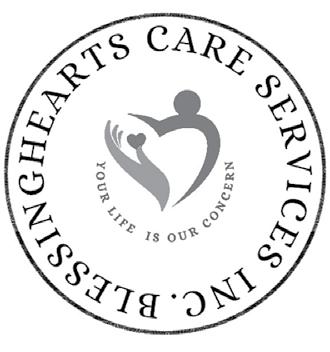
Our Services include:
• Companionship care
• Personal care
• Health management
• Food preparation & shopping
• Light House Cleaning
• Transportation • Respite
• Customized care services
24/7 Day Services Call Us 1-204-333-7886 blessingheartscs@gmail.com • www.blessinghearts.ca
Your Life is our concern

Chateau)!
• Life Lease independent living for 55+ in a close-knit community.
• Prime location with indoor access to shopping, dining, medical services, arena, the Y and Millennium Library.
• security and emergency response services for added peace of mind.
• spacious one-bedroom and two-bedroom options available.
• features include in-suite washer and dryer, balcony enclosures, and heated parking.
• suites can be customized according to your preference.
cascade” – a common example is being prescribed a new drug for stomach upset, which may be caused by a drug you are already taking. Ask your doctor to consider whether new symptoms could be the result of the drugs and whether you should consider stopping a medication or reducing the dose, also known as deprescribing.
8. Look out for changes. Tell your doctor how new drugs affect you and whether there’s been a change for better or worse. Doctors may be depending on you to report and may not be actively monitoring the effects. If you SEE something (or feel something), SAY something
(just like at the airport!). You do not have to be “right” in order to bring forward concerns about adverse reactions from a drug.
9. Seniors are more sensitive to medications. Older people are more sensitive to medications because of changes in their liver and kidney function as they age. In many cases, drugs for seniors should be prescribed at a reduced dose. The more medications used, the greater the chance of drug interactions. Drugs commonly prescribed to older adults can cause dizziness and loss of balance, leading to falls or fractures and hospitalization, as well as cognitive and memory problems. Adverse drug reactions can start even if you have been taking a drug for a long time. Your doctor depends on you to raise issues of concern and to begin to talk about deprescribing some drugs: deprescribingnetwork.ca/starting-aconversation
Learn more about managing medications by visiting this website: deprescribingnetwork.ca
Johanna Trimble is a patient safety advocate and member of the BC Patient Voices Network. She is a member of the Geriatrics and Palliative Care Subcommittee of the Council on Health Promotion for Doctors of BC.
Janet Currie is a social worker who has been involved with patient and medication safety issues for over 17 years. She is particularly concerned about the safety and efficacy of psychiatric drugs and their impacts on seniors.

IF YOU ARE A SENIOR. . . . . .
You should consider having the following in place Will
The preparation of a will may seem like a daunting task, however, it is essential to ensure that your property is disposed of according to your wishes upon your death. If you pass away without a valid will, the law states what is to happen to your estate.
Power of Attorney
A power of attorney is a document which appoints an individual to handle your affairs in the event you become mentally incapable of making your own decisions. Nothing prevents you from continuing to make your own decisions while you are still competent.
A power of attorney is an extremely valuable document to have in place in case anything happens to you which affects your mental ability, such as a stroke, coma or dementia.
Health Care Directive (Living Will)
A health care directive, commonly called a living will, is a document which appoints an individual to make decisions with regard to your health care only, while you are alive but unable to express your decisions yourself. This document is distinct from a power of attorney and deals only with health care decisions such as whether life sustaining treatments, such as CPR or blood transfusion, should be continued or withdrawn.

• Cat-friendly. 430 Webb Place, Wpg,

June 2024 lifestyles55.net 23 TACIUM VINCENT & ASSOCIATES 206 St. Mary’s Road, Winnipeg, MB R2H 1J3 DAVID G. VINCENT (204) 989-4236
www.taciumvincent.com
Standard Fees* Seniors Last Will and Testament $225.00 $200.00 Power of Attorney $175.00 $150.00 Health Care Directive $ 75.00 $ 50.00 * plus GST and PST - Rates are per person. Home and hospital visits are also available $250.00* (includes both meetings) *plus GST and PST Standard Fees* Seniors Last $275.00 $225.00 Health Care $125.00 $100.00 *Plus GST and PST - Rates are per person. hospital visits $250.00* (includes both meetings) *Plus GST
PST.
and
R3B 3J7 • 204-306-4617 • Email: sisaac@freddouglasmanagement.com www.facebook.com/freddouglaschateau • http://www.freddouglaschateau.ca
Look no further than Fred Douglas Chateau (formerly Kiwanis
Looking for a place to call home that’s affordable, safe and accessible?
Johanna trimble and Janet currie
• • •
• • •

BOOK A TOUR




24 lifestyles55.net June 2024
Learn more about our Age In Place community! The Courtyards at Linden Pointe is excited by the opportunity to pamper residents with modern amenities, comforts, and services including On-Site Nursing Care Team 24/7, elevated dining, free transportation to medical appointments, and a maintenance free lifestyle. Don’t miss out on our studio specials! Your forever home awaits! 75 Falcon Ridge Dr. Winnipeg, Manitoba Courtyards Senior Life .com 204.560.3850 a TRUE Age In Place community To learn more about our community, scan our QR Code! ReImagine Senior Living Only a few remaining Immediate possession available!


 Marshall Murdock
Marshall Murdock
























 Romel Dhalla On The Money
Romel Dhalla On The Money





















 Trudy Schroeder Random Notes
Trudy Schroeder Random Notes
































 Katie
Katie


 Gary Brown Geocaching
Gary Brown Geocaching












